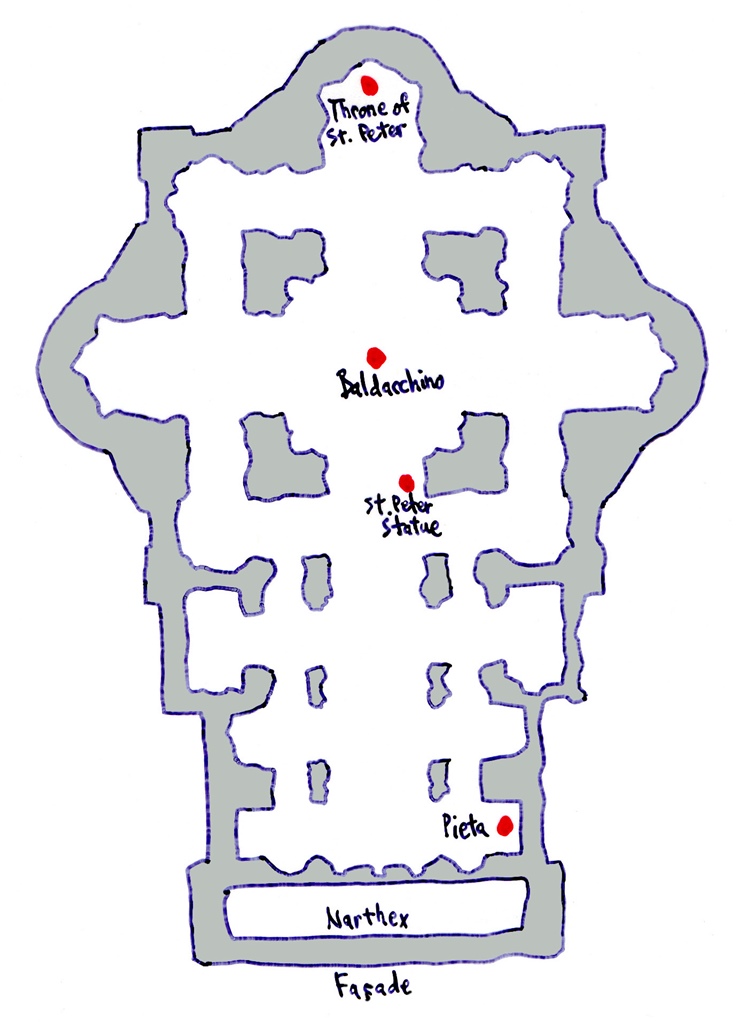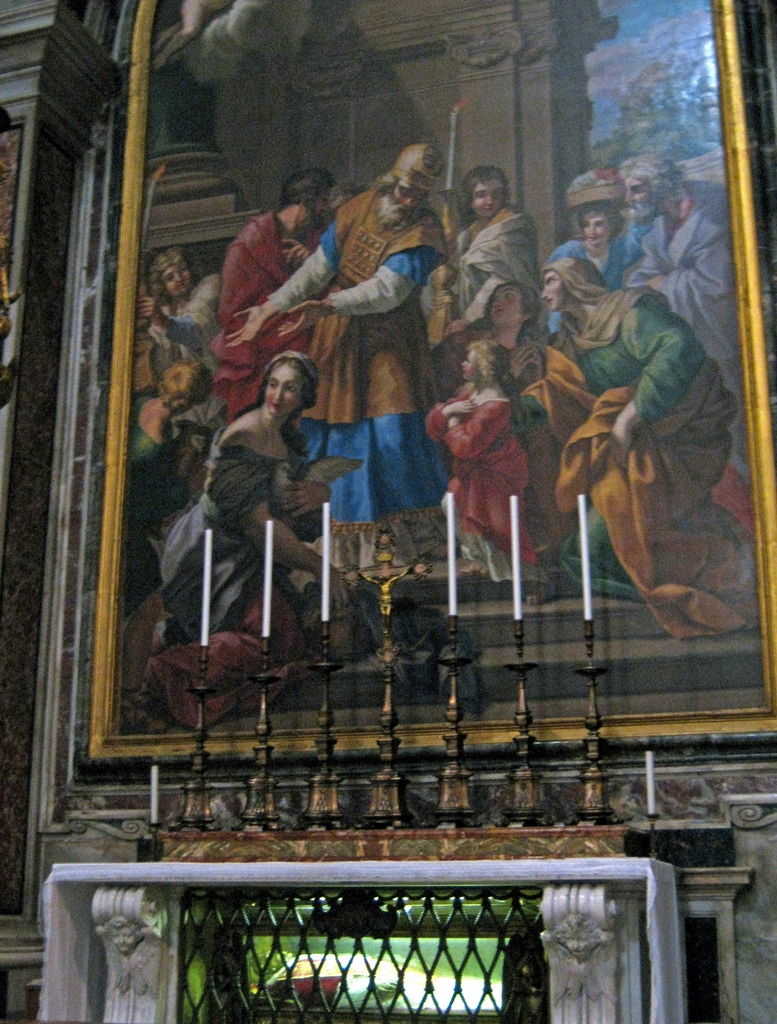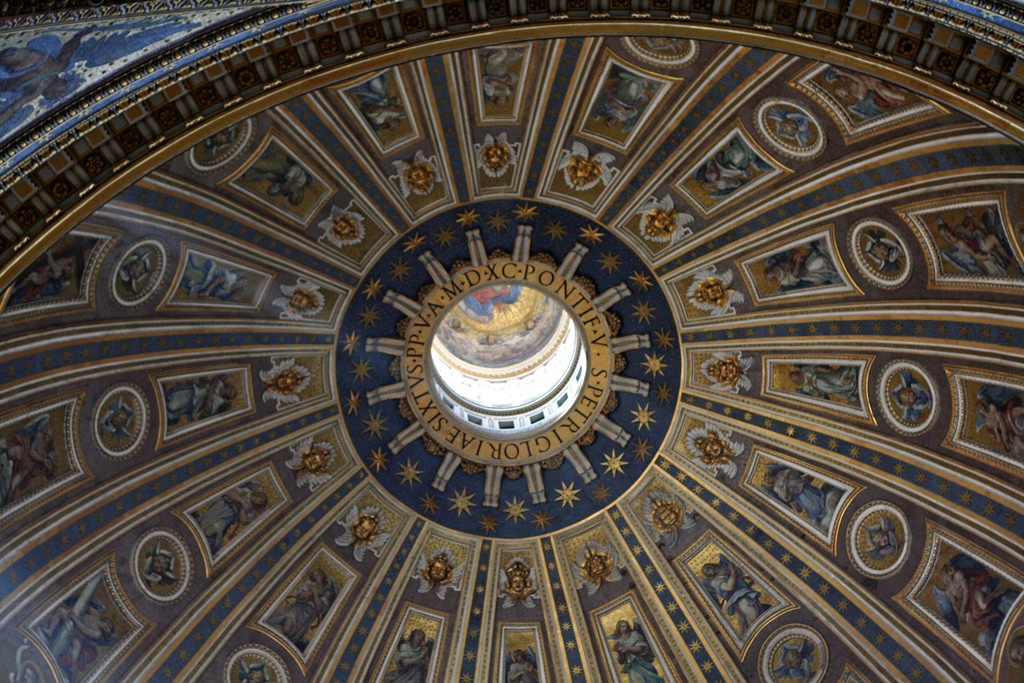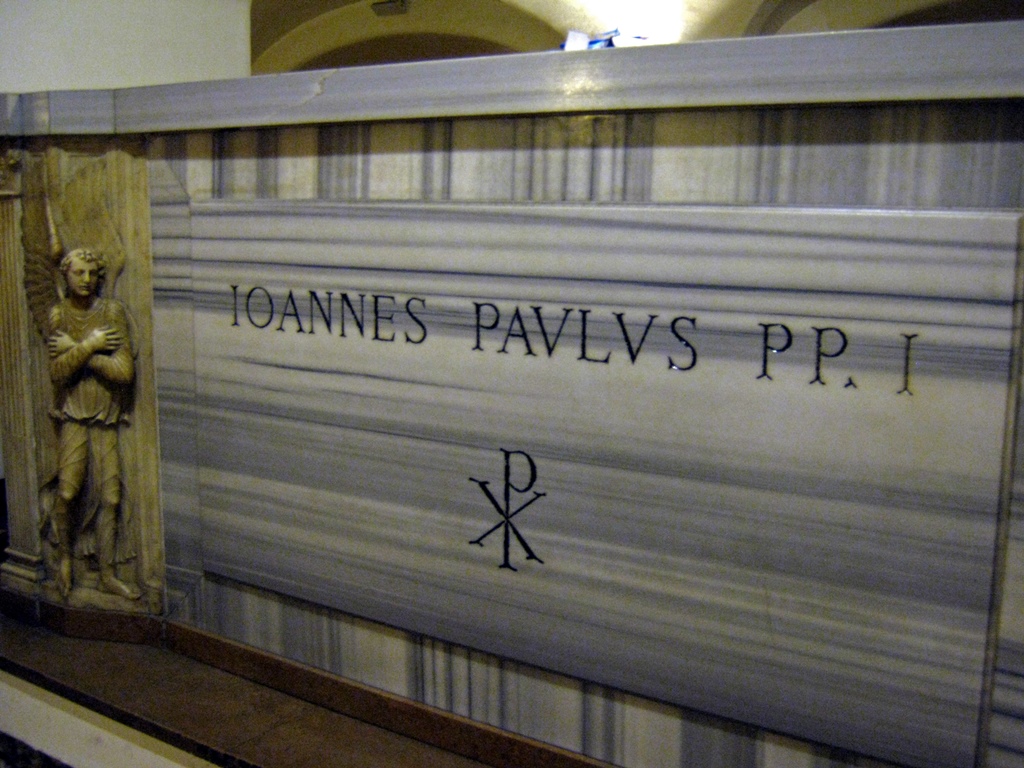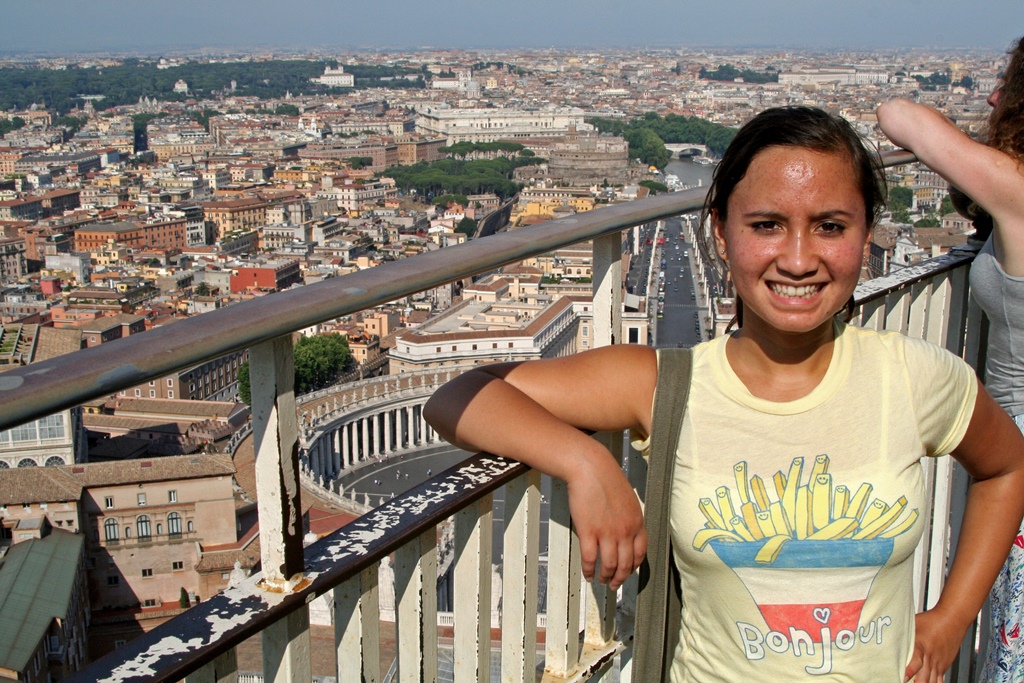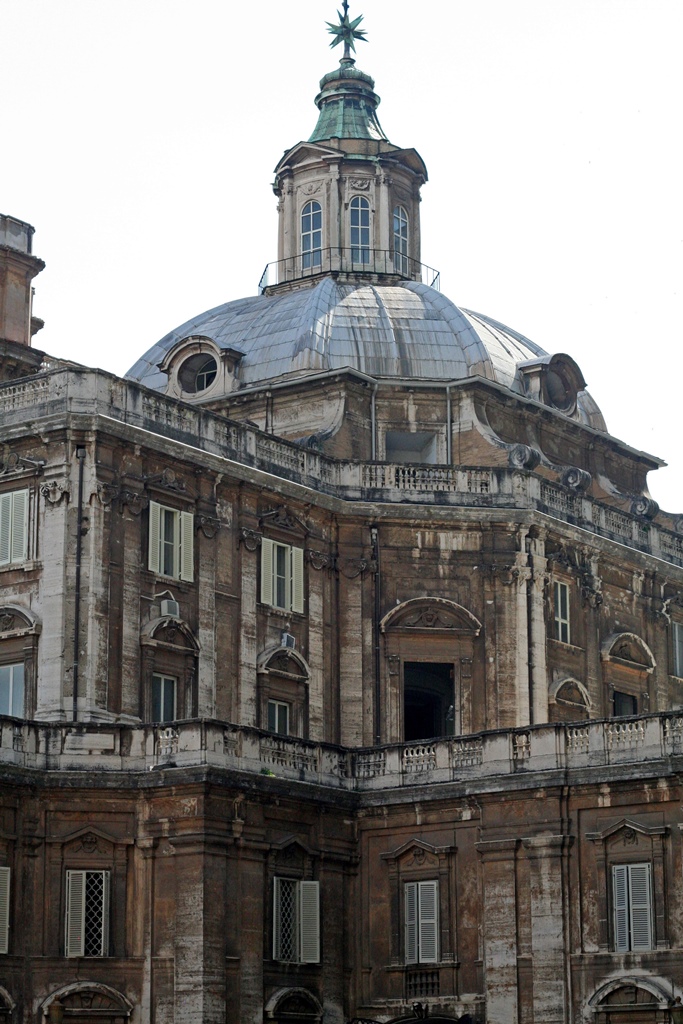Basilica Layout
St. Peter's Basilica is the spiritual center of world Catholicism. It's also a really gigantic
church. A basilica was first built at the location in the fourth Century A.D. by the emperor
Constantine, the spot being chosen because it was thought to be above the burial place of St.
Peter, who had been crucified nearby three hundred years earlier. This basilica was about 340
feet long, with a large, rectangular atrium in front of it. It was used for many centuries,
during which a number of renovations and embellishments undoubtedly took place. For most of
the 14th Century, the Papacy was moved to Avignon, France, a period during which the
thousand-year-old basilica suffered from neglect. After Gregory XI moved the Papacy back to
Rome in 1377, the succeeding Popes made do with the beat-up old building for more than a
century, though there was talk and even some preliminary planning on doing a radical
renovation. But not much happened until 1505, when Julius II, who had not yet commissioned
Raphael and Michelangelo to perform their famous works, had a simple idea: tear the whole
thing down and start over. This idea met with stiff resistance, as to many, the old basilica
was a sacred structure that should not be disturbed. But Julius was determined, and he was
the Pope.
A competition was held for a plan for the new basilica, and the winner was Donato Bramante,
who proposed a layout in the shape of a Greek cross (four equal "arms", like the Red Cross
logo), with a hemispherical, Pantheon-like dome in the middle, to be supported on four
gigantic piers.
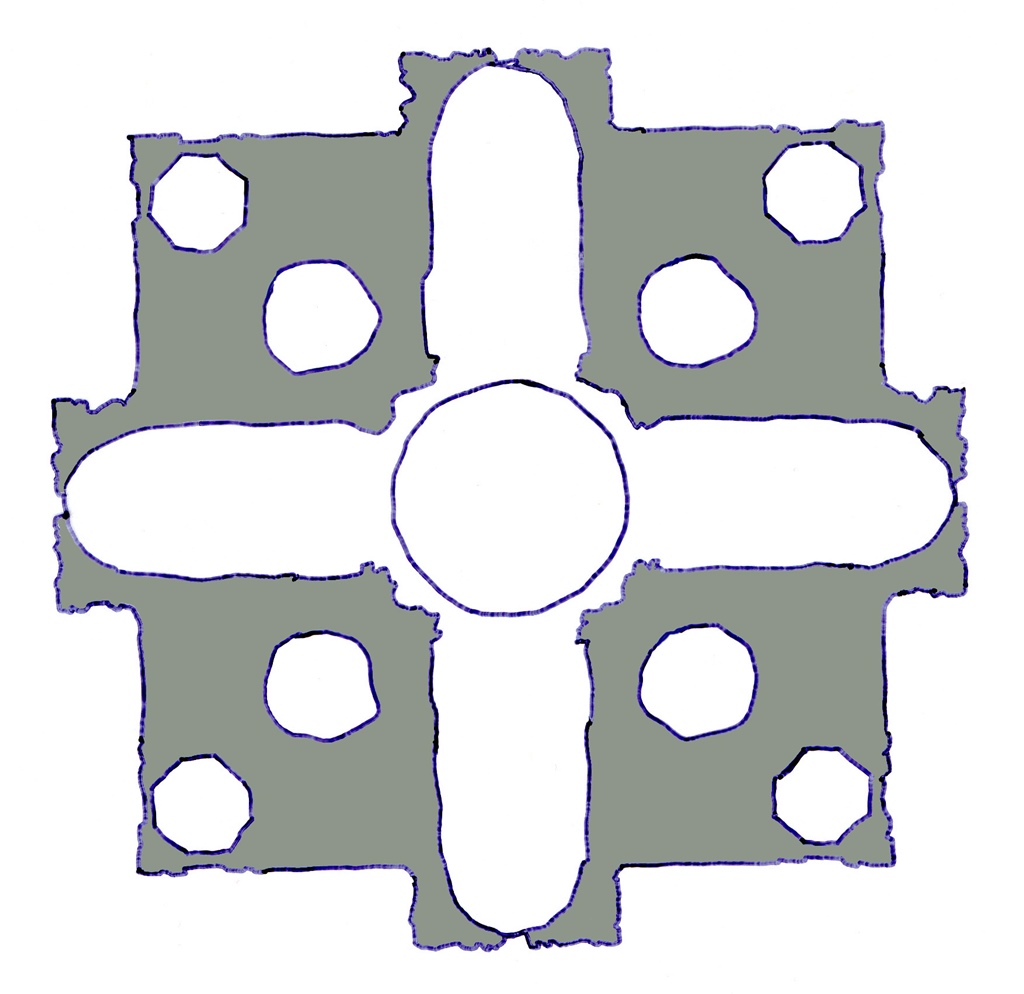
Greek Cross Layout
The piers were actually built by Bramante, with some demolition work on the old basilica
taking place at the same time. But only a small part of the old building was torn down, and
services continued to be held there. But then Julius and Bramante died, and a new Pope and
architect had to be named. This replacement of Popes and architects happened many more times
during construction of the basilica, which ended up taking 120 years. Among the chief
architects at different times were both Raphael (from 1515 until his death in 1520) and
Michelangelo (from 1547 until his death in 1564). Between Bramante and Michelangelo,
many changes in the plans were proposed, such as extending the layout into a Latin cross
configuration (one extended arm, as seen on most churches in the U.S.) and reshaping the dome
in various ways, but little physical progress was made, besides the strengthening of the
still-domeless piers. It didn't help that the city of Rome was sacked in 1527, by the troops
of Holy Roman Emperor Charles V (the Pope at the time, Clement VII, escaped through a secret
corridor to the Castel Sant'Angelo, but most of the Swiss Guard was massacred).
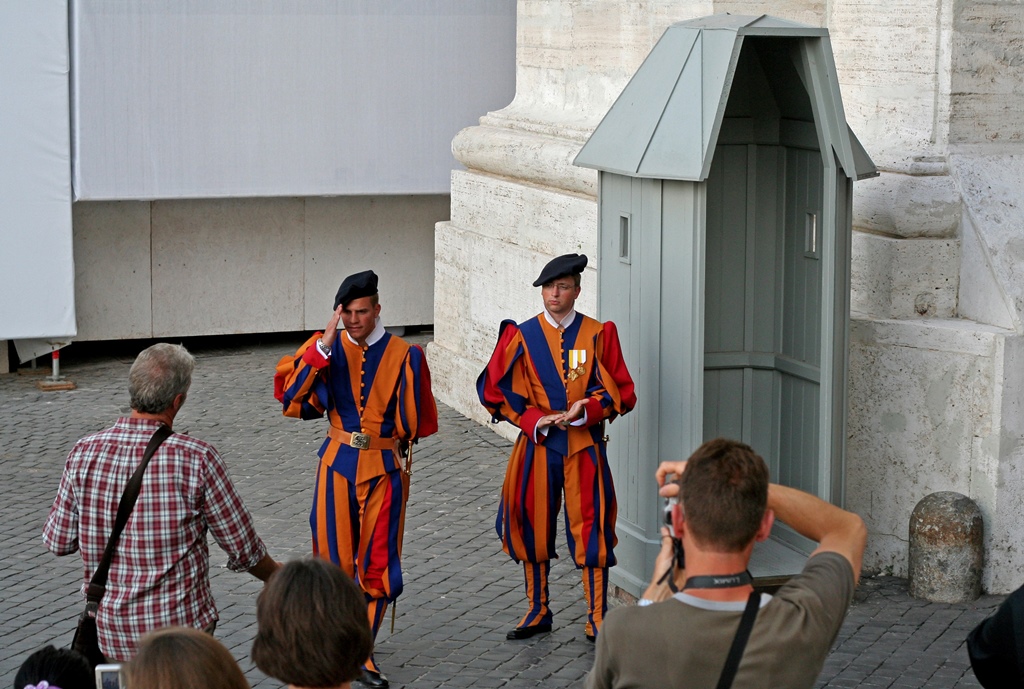
Swiss Guard Officers
Michelangelo reconciled the previous designs into a unified plan in the shape of a Greek cross,
and provided a detailed design (and even a wooden scale model) of a dome which was more ovoid
than hemispherical. As far as actual progress on the Basilica, Michelangelo got as far as
constructing the "drum" (a cylindrical base for the dome) atop the piers and then expired.
After Michelangelo's death, succeeding Popes decreed that his plans should be followed exactly,
but not much progress was made, as it wasn't always clear exactly how to do this. But in 1585,
Pope Sixtus V appointed Giacomo della Porta architect, and della Porta energetically made a
substantial amount of progress. In 1588, Sixtus asked della Porta for a plan to complete the
dome. Della Porta hesitantly made some changes to the dome's design, elongating it to make it
even taller, in the belief that the forces generated by its weight would be more vertical than
lateral (a belief that ultimately proved to be correct). He presented it to Sixtus, half
expecting to be berated for changing the plan. Sixtus asked how long it would take to build,
and della Porta guessed ten years. Sixtus told him he had only thirty months, but would be
supplied with all the workers and materials that were needed. Della Porta got to work with his
army of workers and, to everyone's surprise, was able to complete the dome in 1590, after just
22 months. Sixtus died three months later.
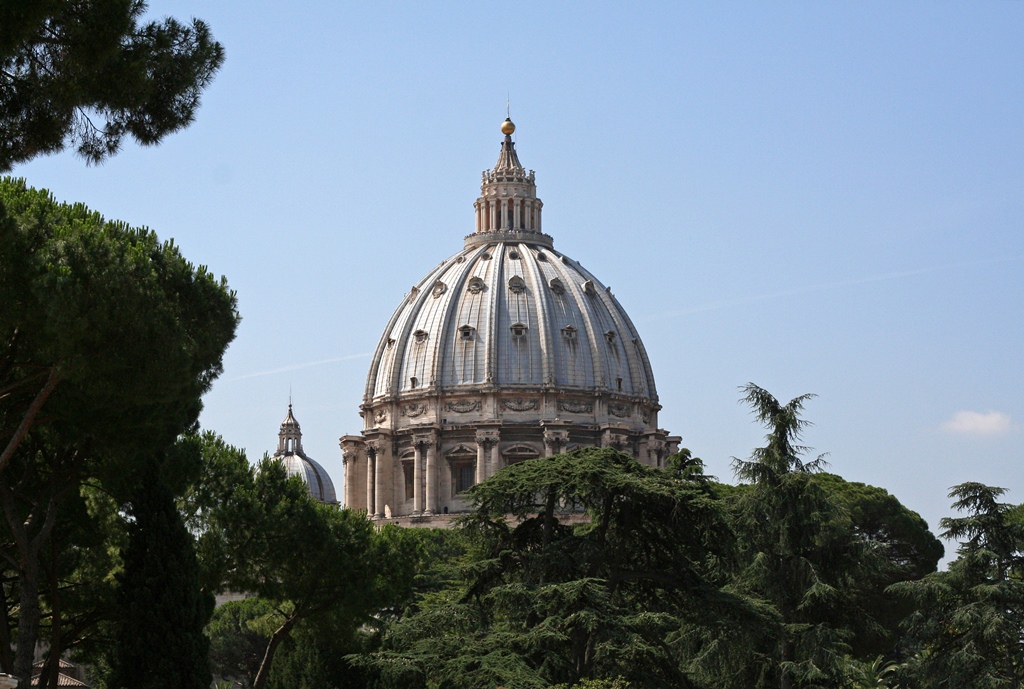
Della Porta/Michelangelo's Dome
One more major change in the plans remained. In 1607, Pope Paul V decided the basilica as
planned (and half-built) wouldn't be big enough to cover all of the ground once covered by
the not-quite-gone old basilica, or to hold the number of people desired, which was to be in the
tens of thousands. His remedy was to change the configuration to that of a Latin cross, and he
chose Carlo Maderno to do it. Maderno was able to artfully accomplish this, in the process
completing the demolition of the old basilica. He also designed and constructed the façade
which is seen today. Paul and Maderno have since been criticized for the Latin cross
configuration and the façade – the configuration because it makes it impossible to see the dome
from the square in front of the basilica, and the façade because it seems too wide for its
height. Originally there were supposed to be bell towers at the corners of the façade, but
Paul's death put a stop to this plan. Years later, Bernini attempted to erect bell towers, but
cracking in the façade made it clear that the foundations of the façade were not strong enough
to support the weight, and the towers were hastily removed. The new St. Peter's Basilica was
finally consecrated in 1626.
A few structural statistics:
- Height (ground to cross atop the dome): 452 feet
- Length: 730 feet (two football fields, including end zones)
- Width (at widest point): 500 feet
- Dome diameter: 136 feet
- Capacity: 60,000
On passing under the façade of the Basilica, we entered a portico area (also called the
narthex) which was also designed by Maderno. From this area there are five doors
leading into the Basilica. The rightmost door is known as the Holy Door, and is only opened
by the Pope on special occasions. On the inside it is bricked over, maybe so no one can open
it by accident. We were herded through the door next to it.
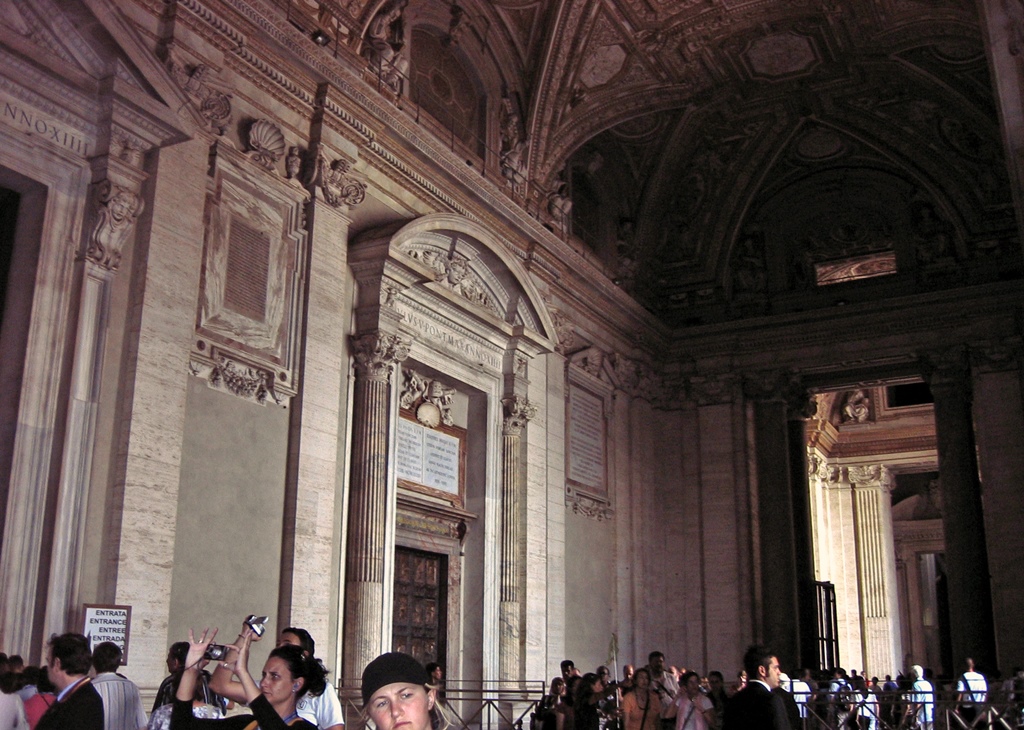
In the Narthex
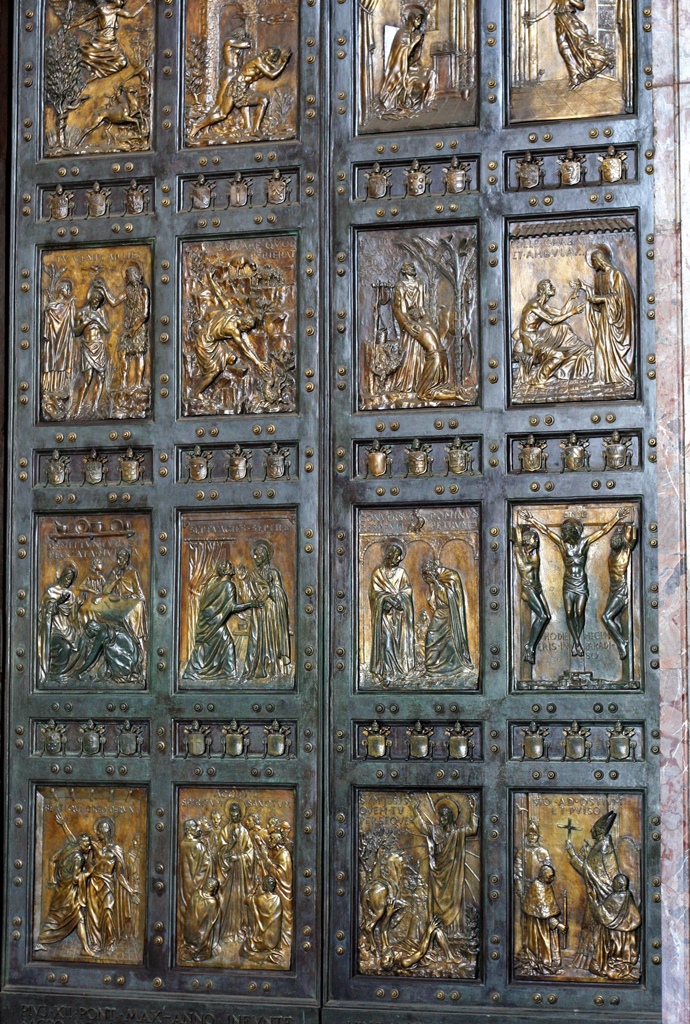
The Holy Door, Vico Consorti (1949)
In the Narthex
When entering the Basilica, one is first overwhelmed by the hugeness of the space, and then by
the countless embellishments and monuments.

Entering the Basilica
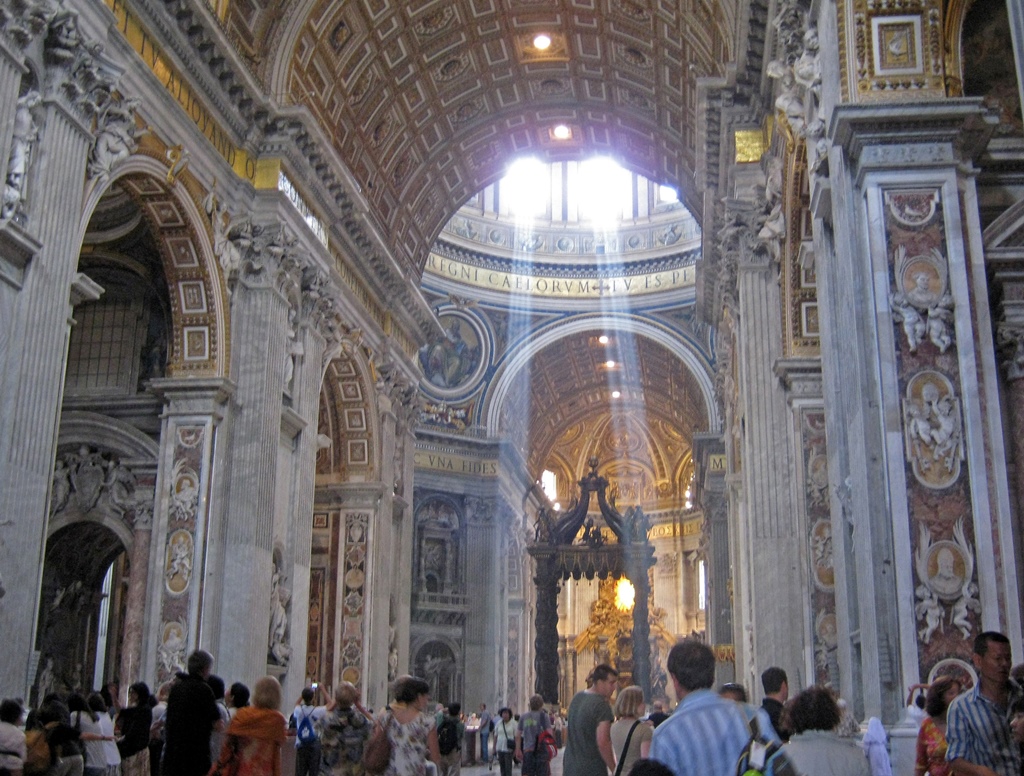
Nave

Basilica from Entrance
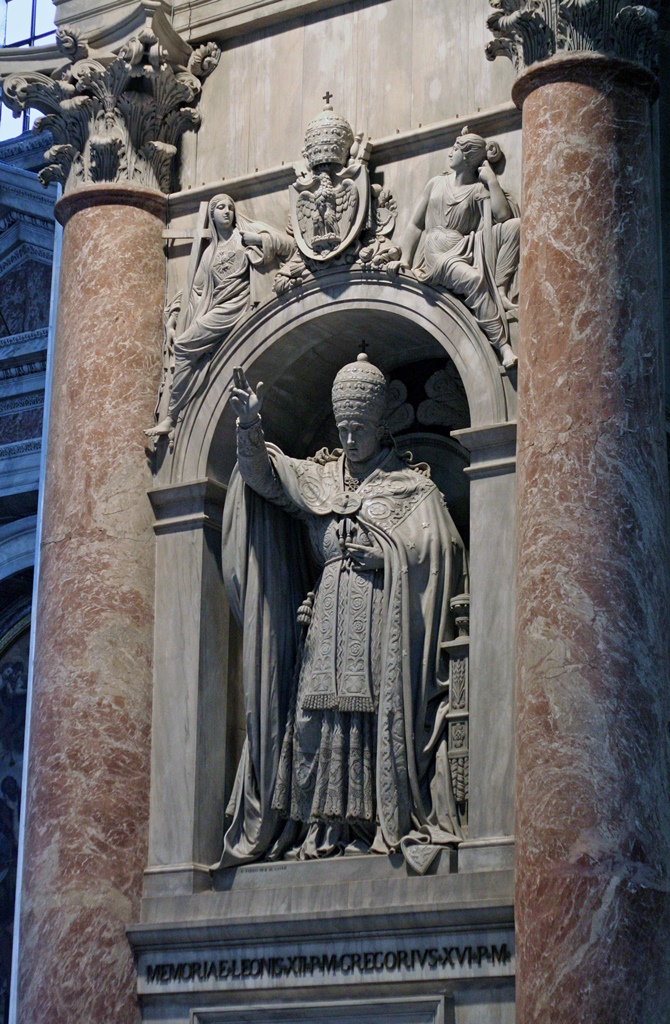
Monument to Leo XII, Giuseppe de Fabris (1836)
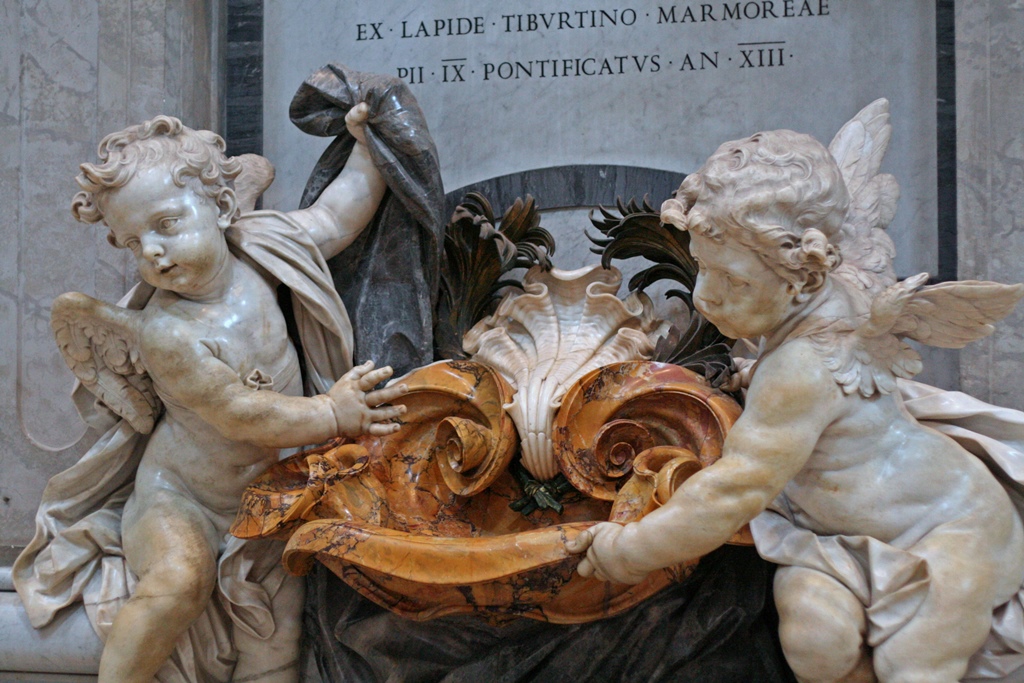
Holy Water Font

Holy Water Font, Monument to Innocent XII

Chapel of St. Sebastian, Monument to Innocent XII
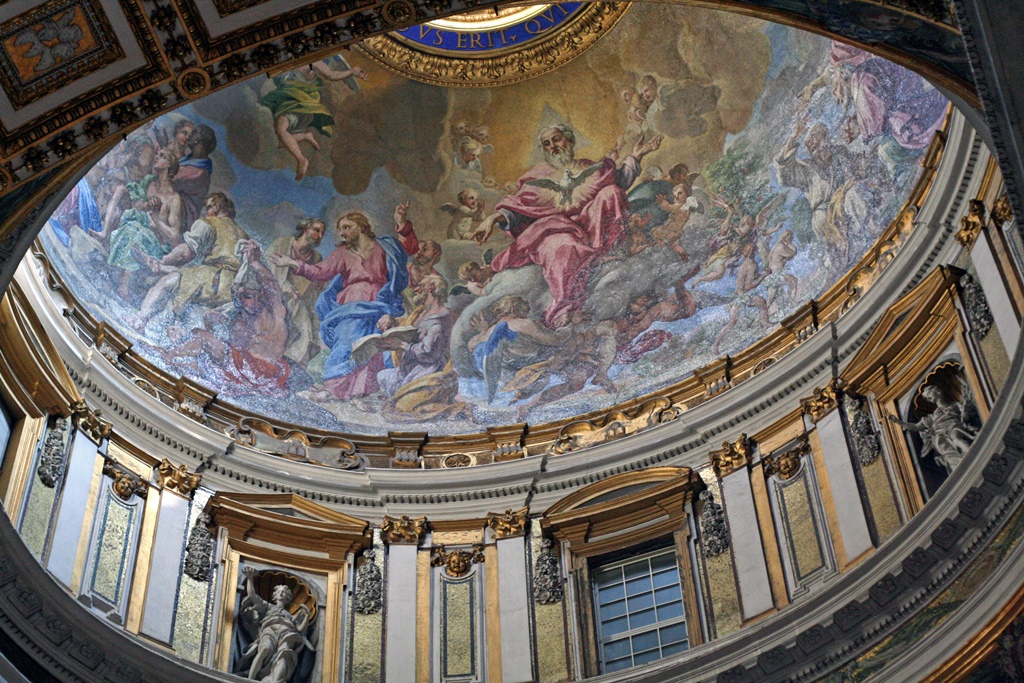
Ceiling Above Chapel
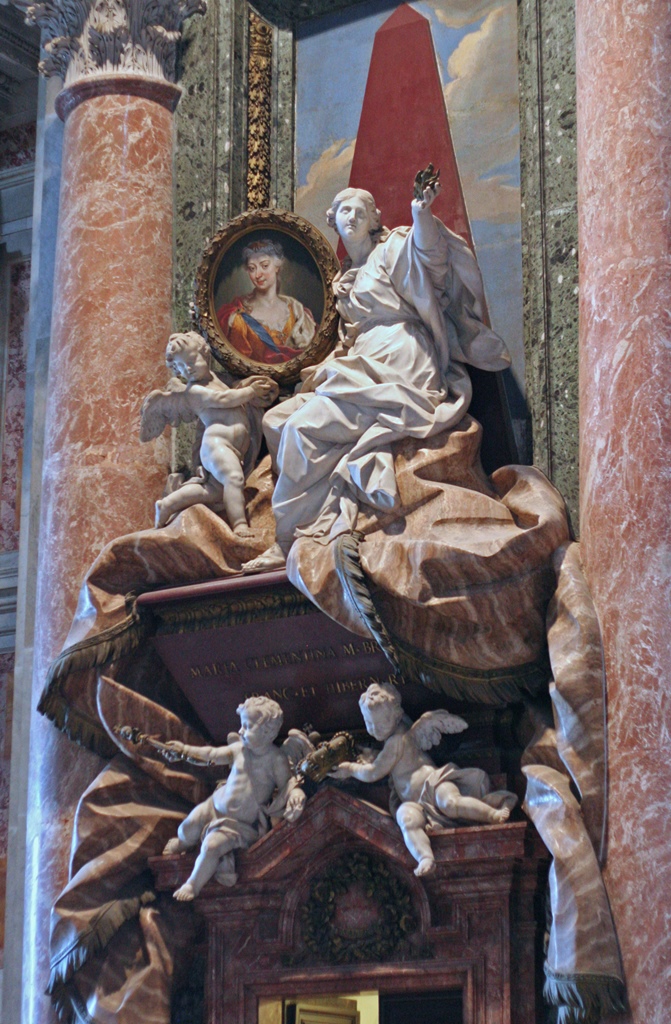
Monument to Maria Clementina Sobieski (1742)
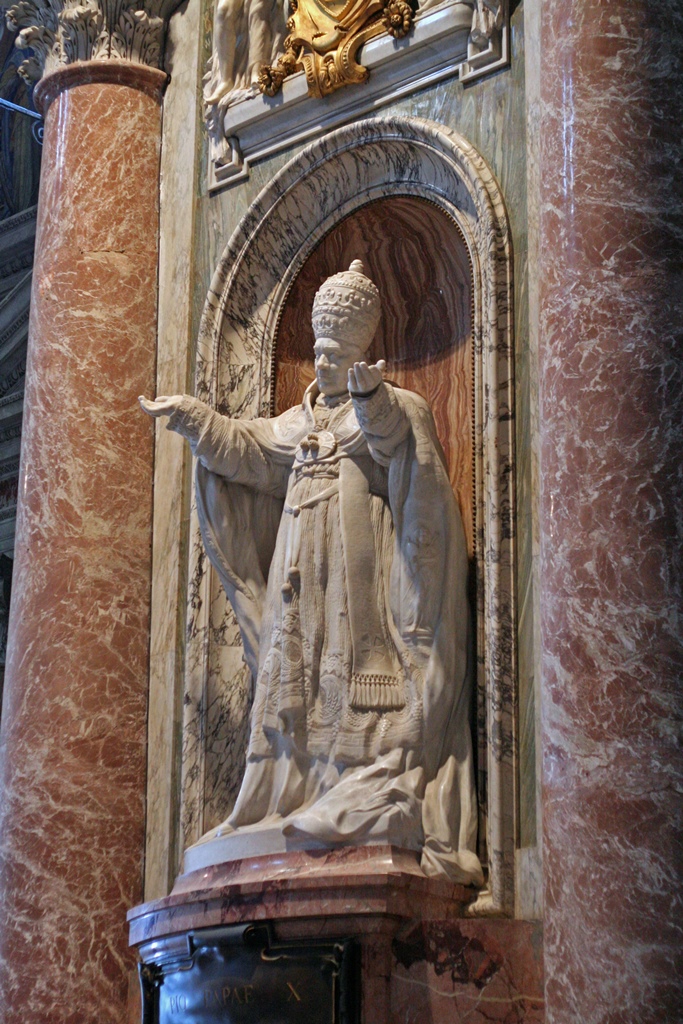
Monument to Pius X (1923)

Gregorian Chapel, Altar and Monument to Benedict XIV
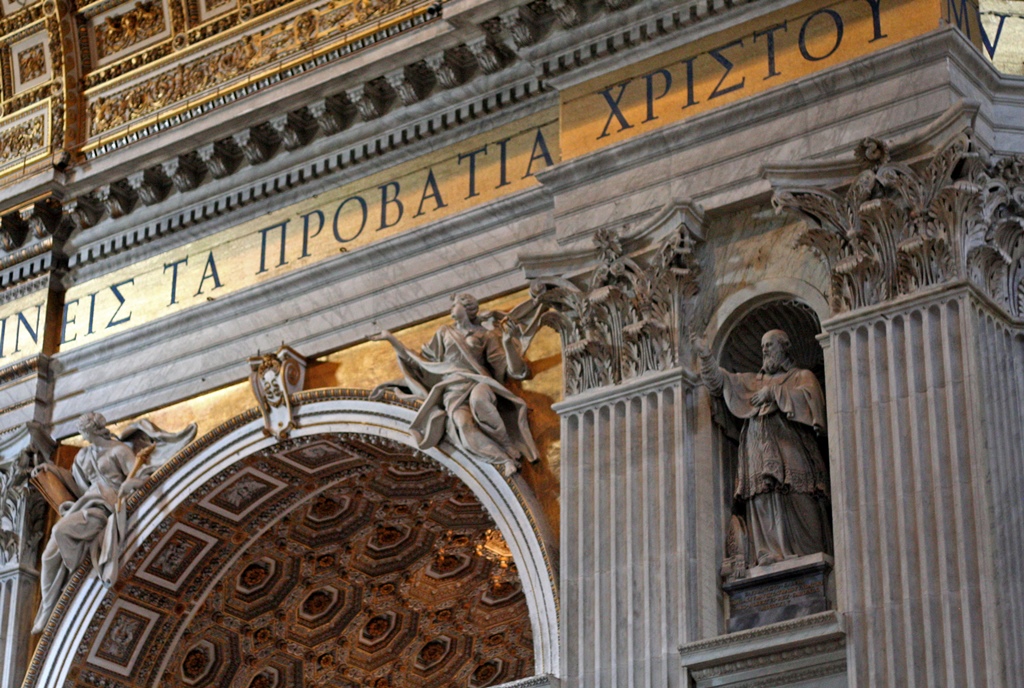
Inscription and Statues
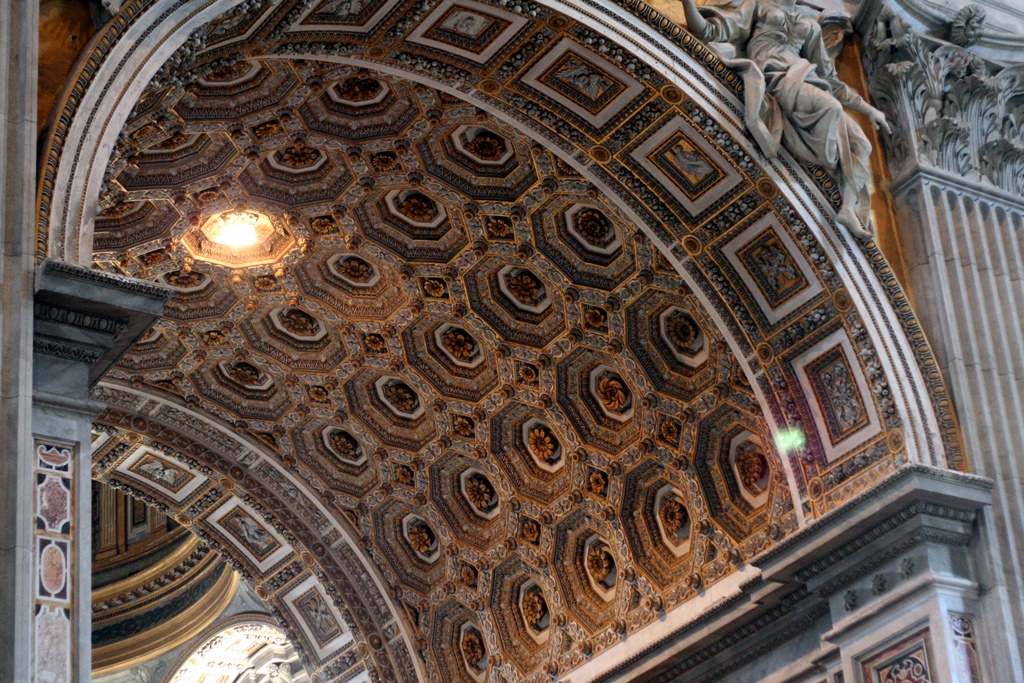
Arch Leading to Side Chapel

Monument to Clement XIII
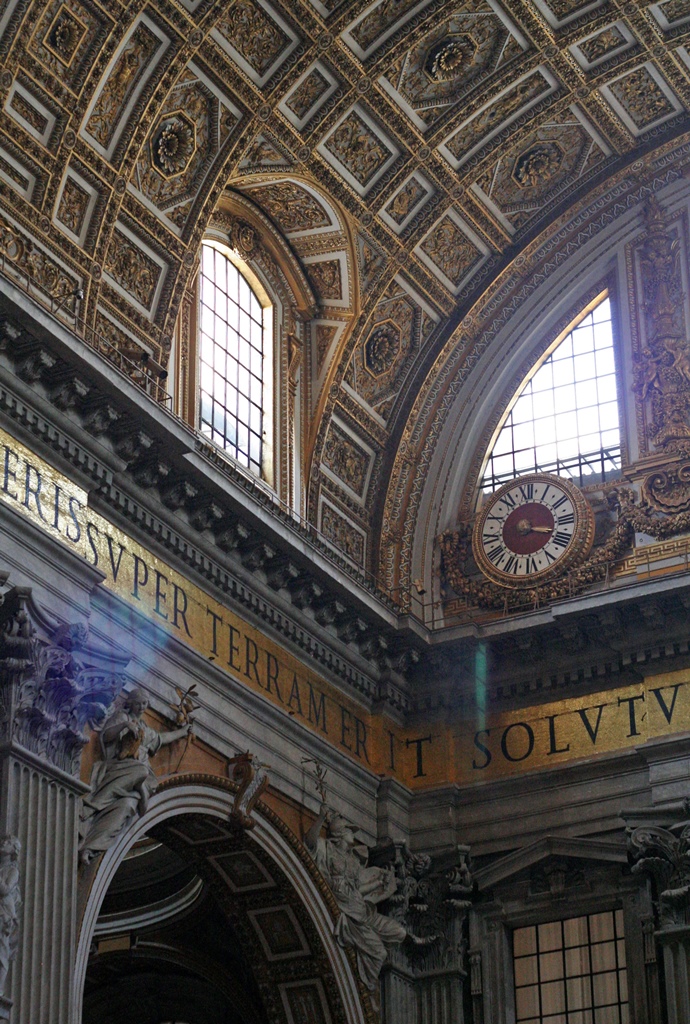
Corner with Clock

Monuments to Pius VII and Pius VIII
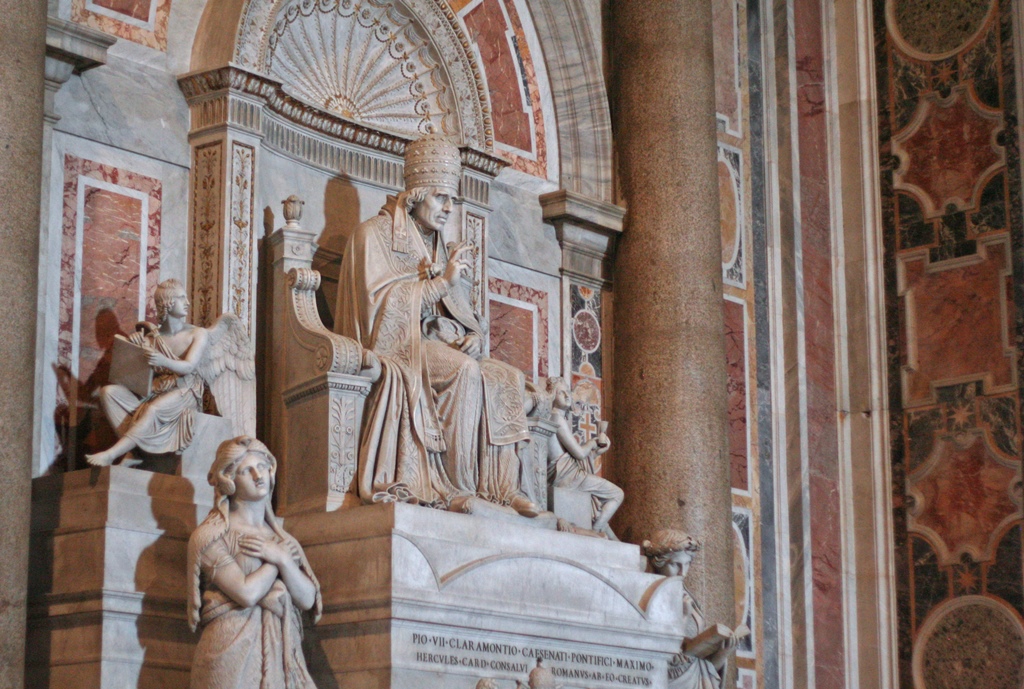
Monument to Pius VII, Bertel Thorvaldsen (1823-31)
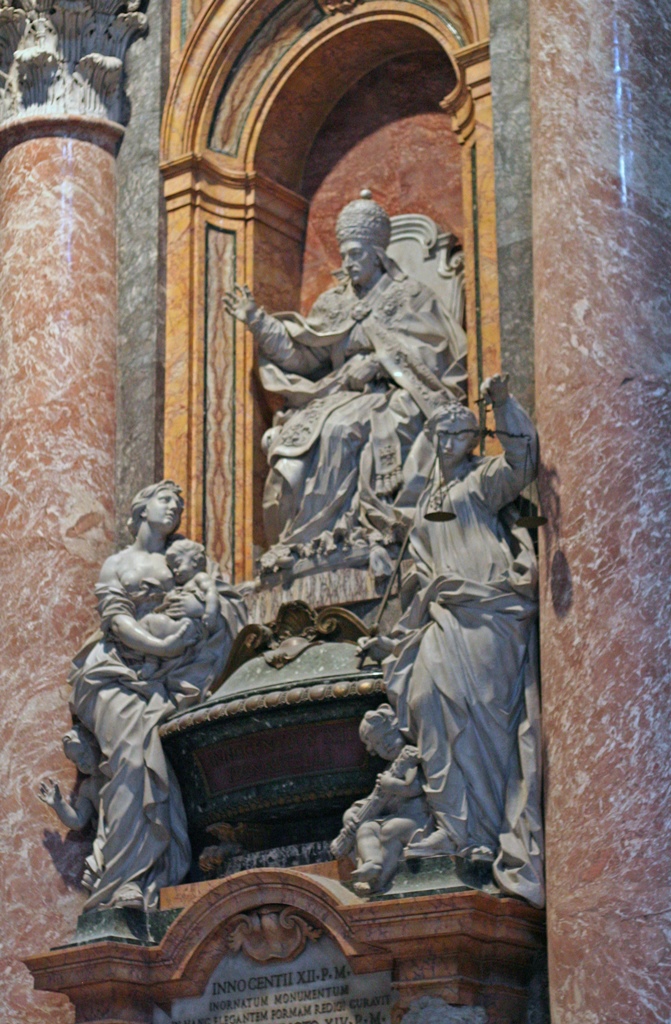
Monument to Innocent XII (1746)

Monument to Innocent XII and Coat of Arms
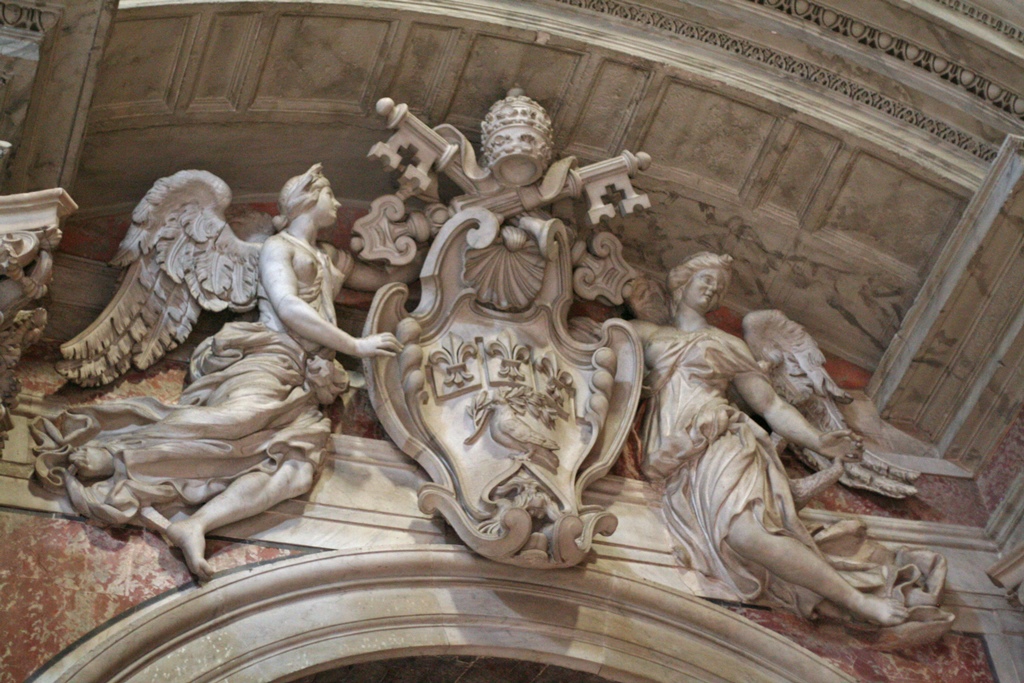
Coat of Arms
Presentation Chapel with Body of Pius X
A few highlights:
Michelangelo's Pieta is here, behind a protective glass wall. Michelangelo sculpted
this statue when he was 23 years old.
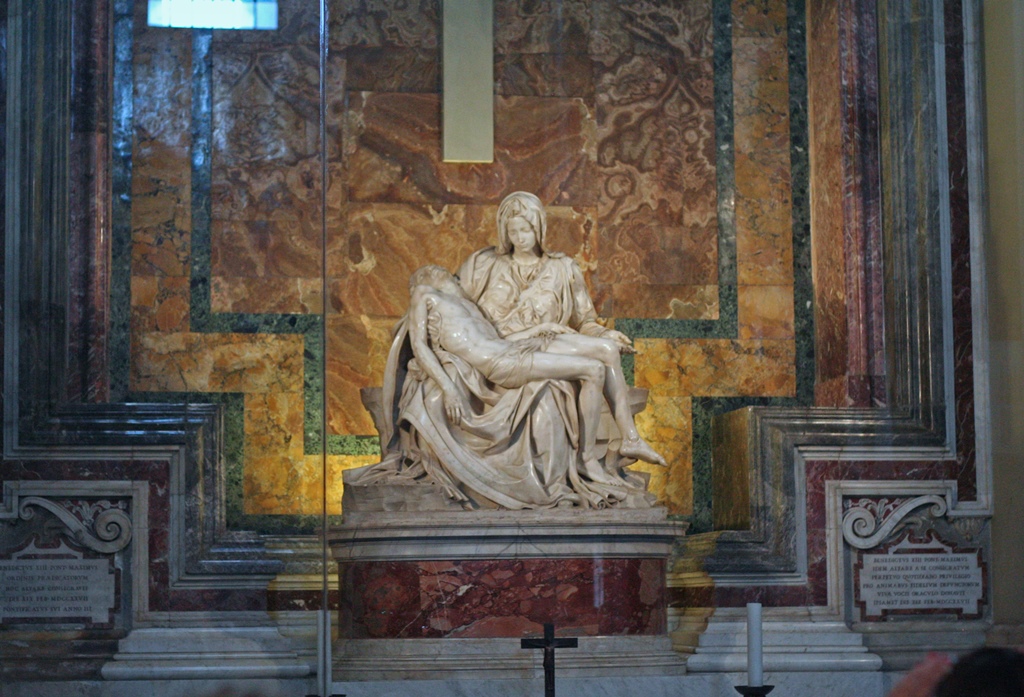
Pieta, Michelangelo (1498)

Michelangelo's Pieta
Most of the paintings in the Basilica are not paintings. If one looks closely, one can see
that they are mosaics. There is a mosaic reproduction of Raphael's Transfiguration (see
the paintings of the Vatican Museums for the original).
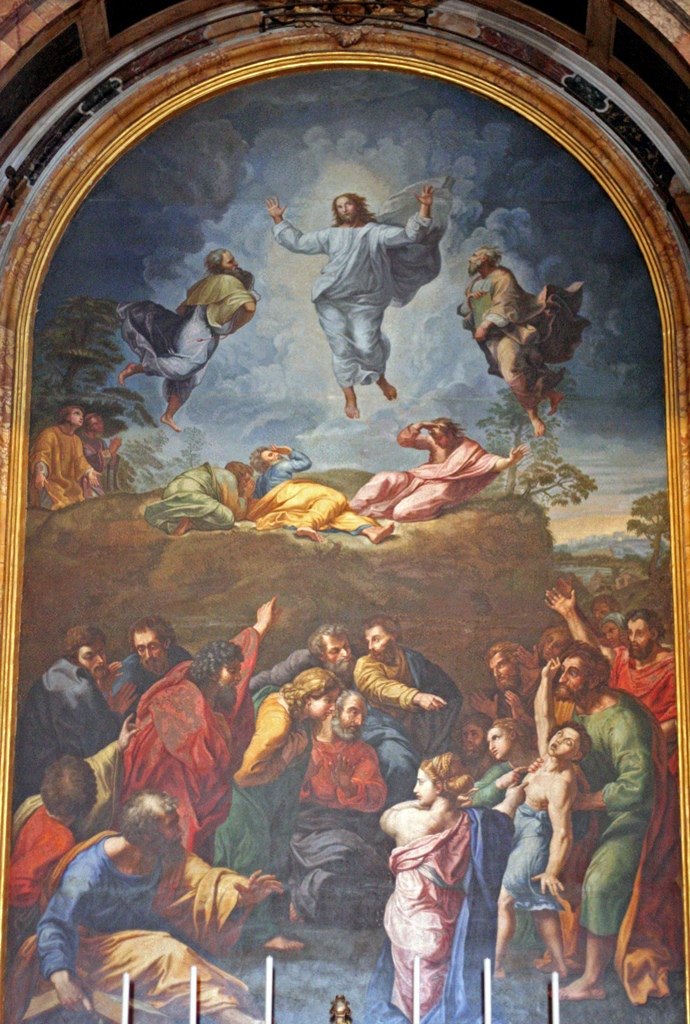
Mosaic of Raphael's Transfiguration (1767)

Transfiguration Mosaic and Clementine Chapel
There is much to see under the dome.
Basilica Dome
First, there is what looks like a huge bronze awning. This is called the baldacchino, and
it was done by Bernini. It is 98 feet tall and covers the Papal altar. Many feet directly
beneath the altar is a tomb believed to be that of St. Peter.
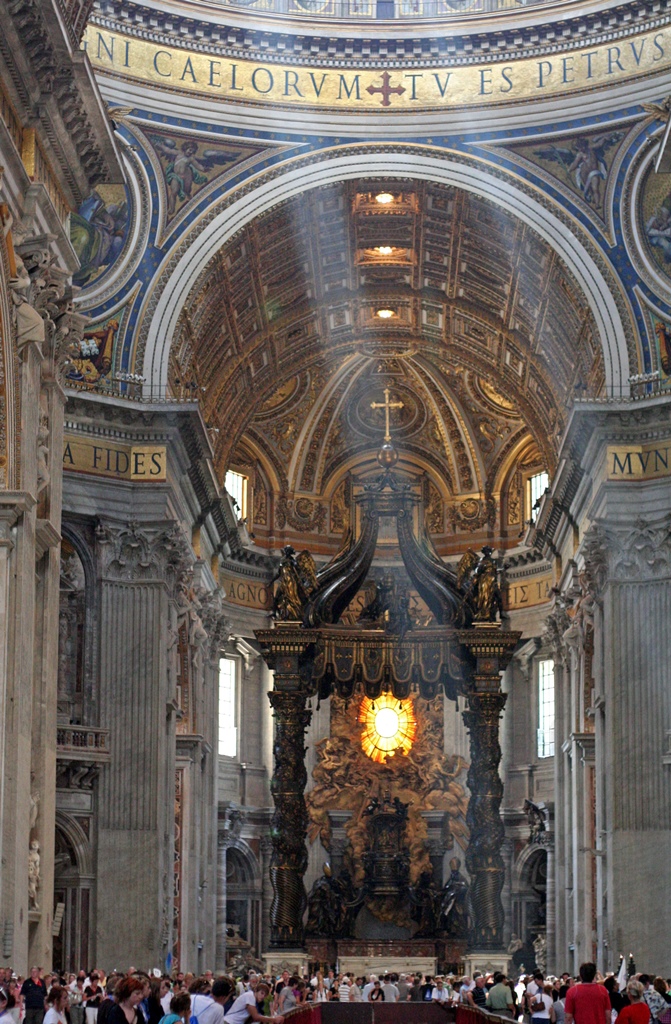
Apse and Baldacchino
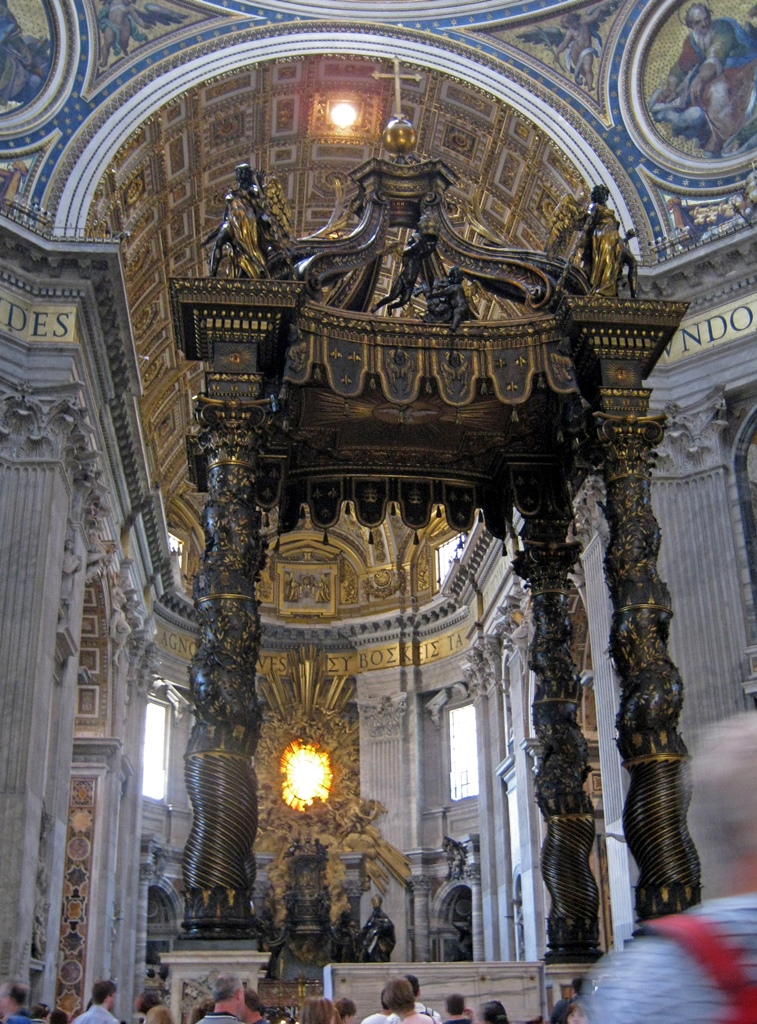
Baldacchino
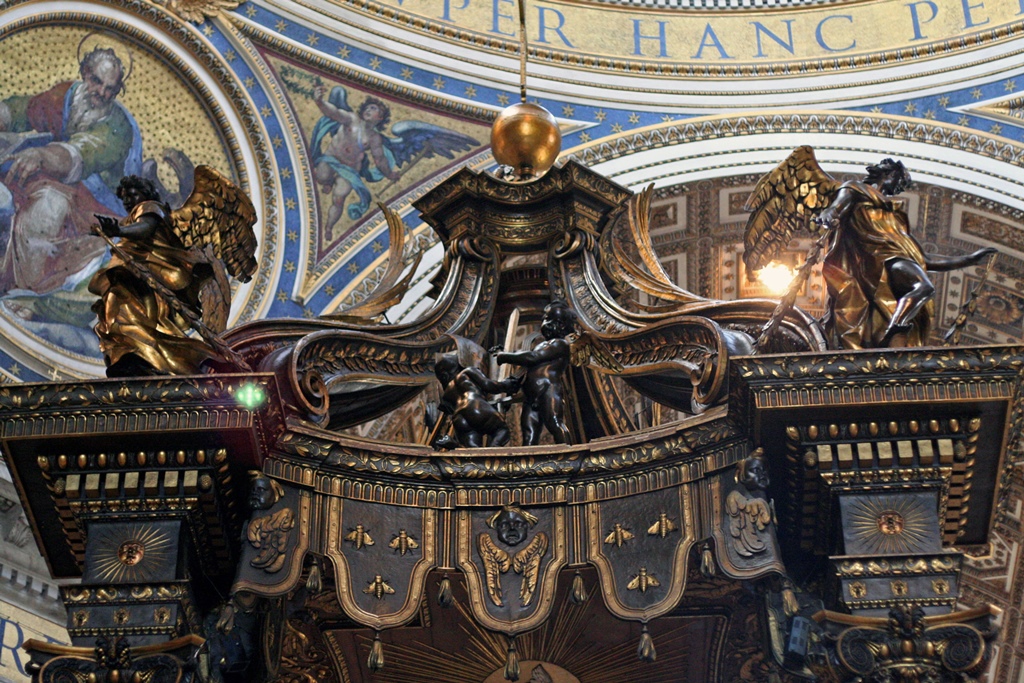
Roof of Baldacchino
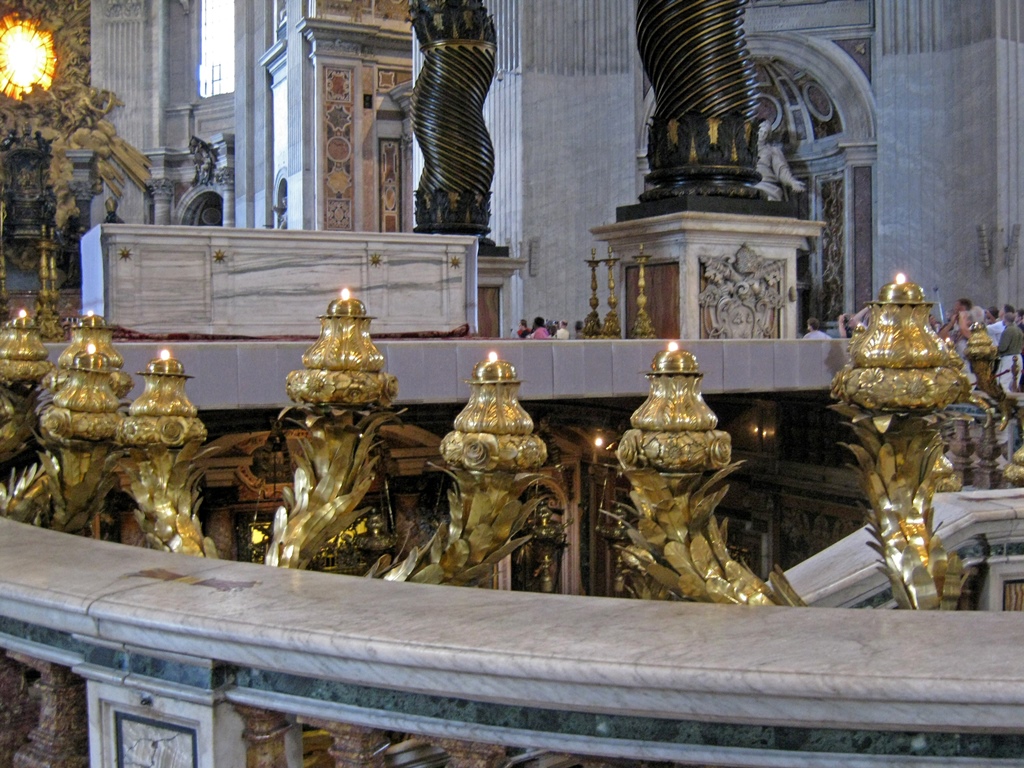
Candle Holders

Dome and Baldacchino

Baldacchino and Surroundings
There are niches carved from the four piers supporting the dome. The niches hold statues of
Sts. Helen, Longinus, Andrew and Veronica. The St. Longinus statue was done by Bernini. Above
the statues are niches containing relics related to the respective saints.
Statues in Niches
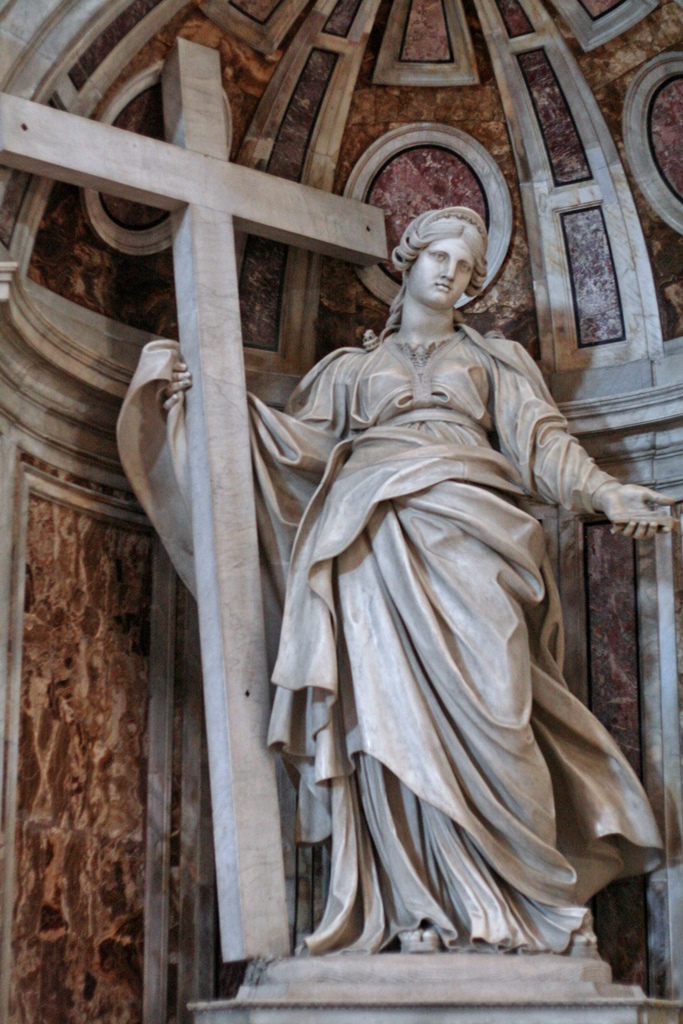
St. Helen, Andrea Bolgi (1635)
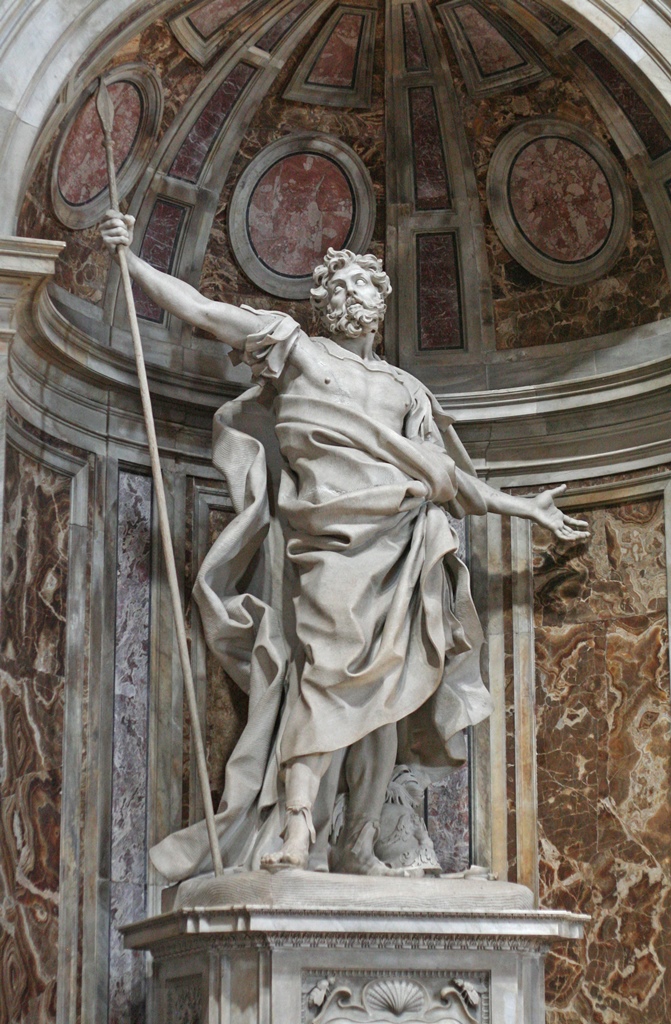
St. Longinus, Gian Lorenzo Bernini (1635)
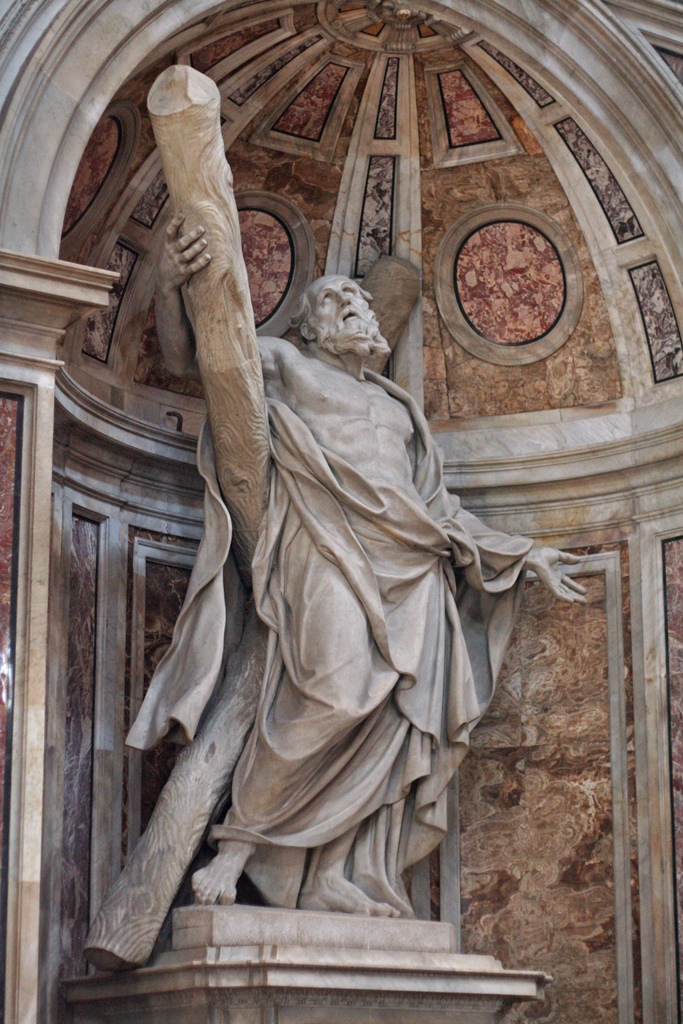
St. Andrew, François Duquesnoy (1635)
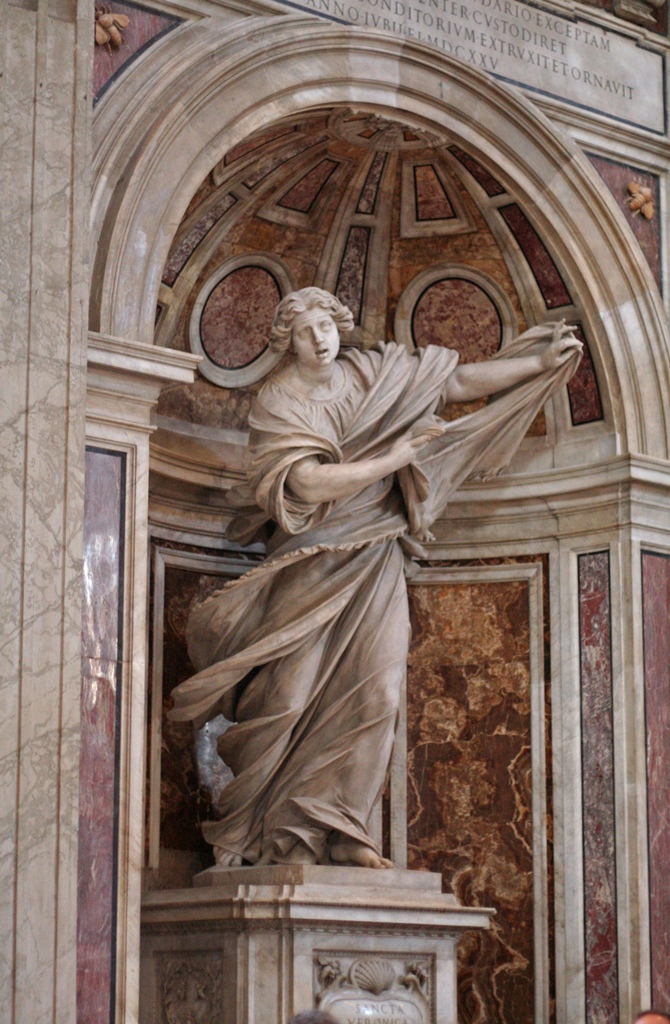
St. Veronica, Francesco Mochi (1629)
Just outside the dome area is a bronze statue of St. Peter Enthroned. Visitors have
rubbed or kissed its feet for centuries, and they are worn smooth.
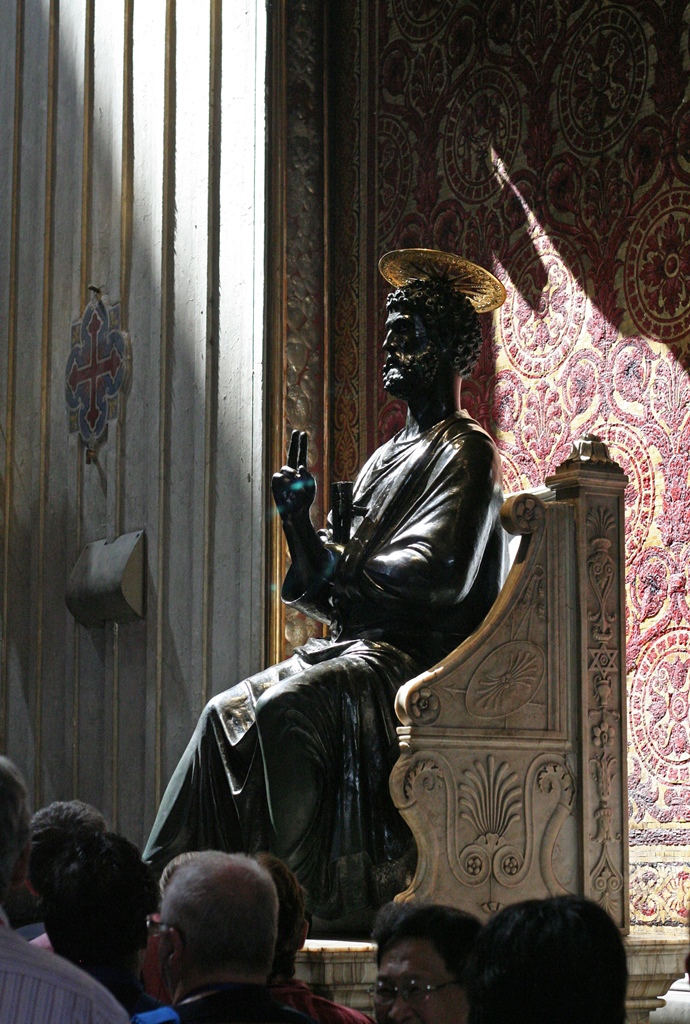
St. Peter Enthroned, Arnolfo di Cambio (c. 1300)

Visitors to St. Peter Enthroned
Behind the baldacchino is Bernini's thoroughly-decorated Throne of St. Peter, below a
window featuring a bird representing the Holy Spirit.
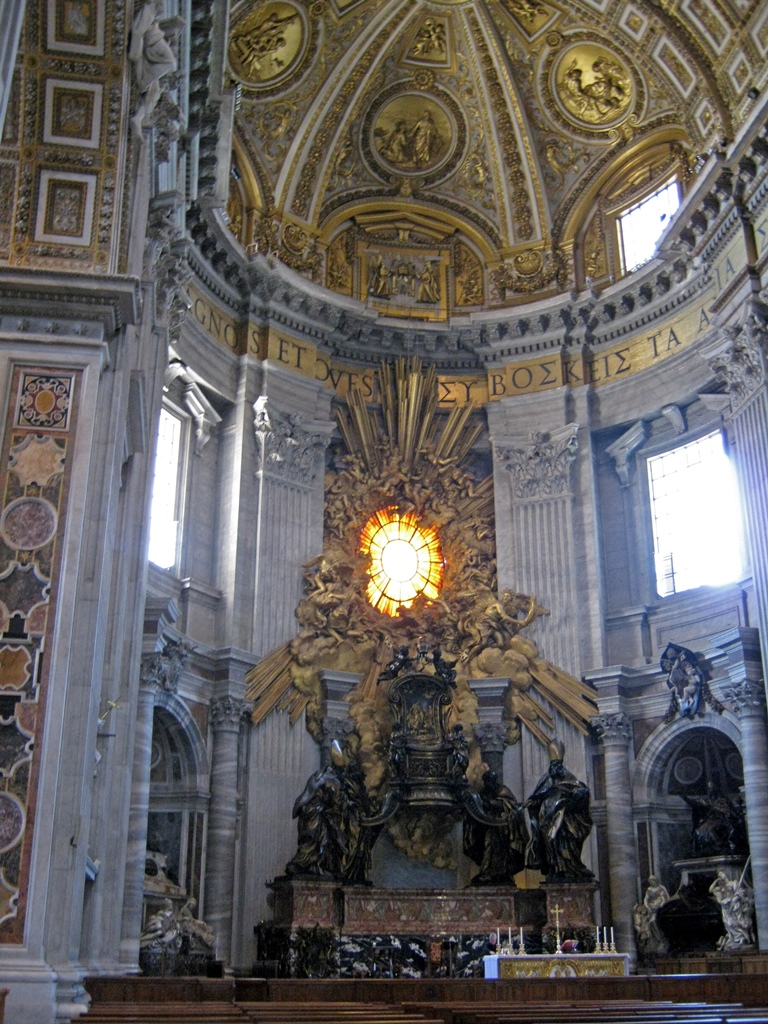
Apse with Throne of Peter
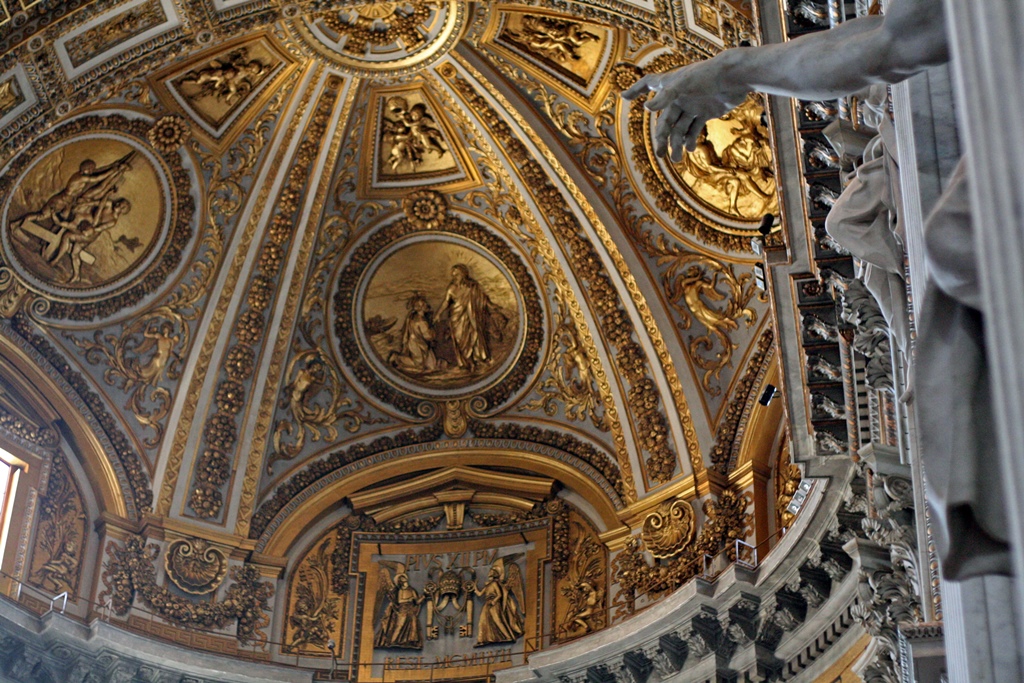
Ceiling of Apse
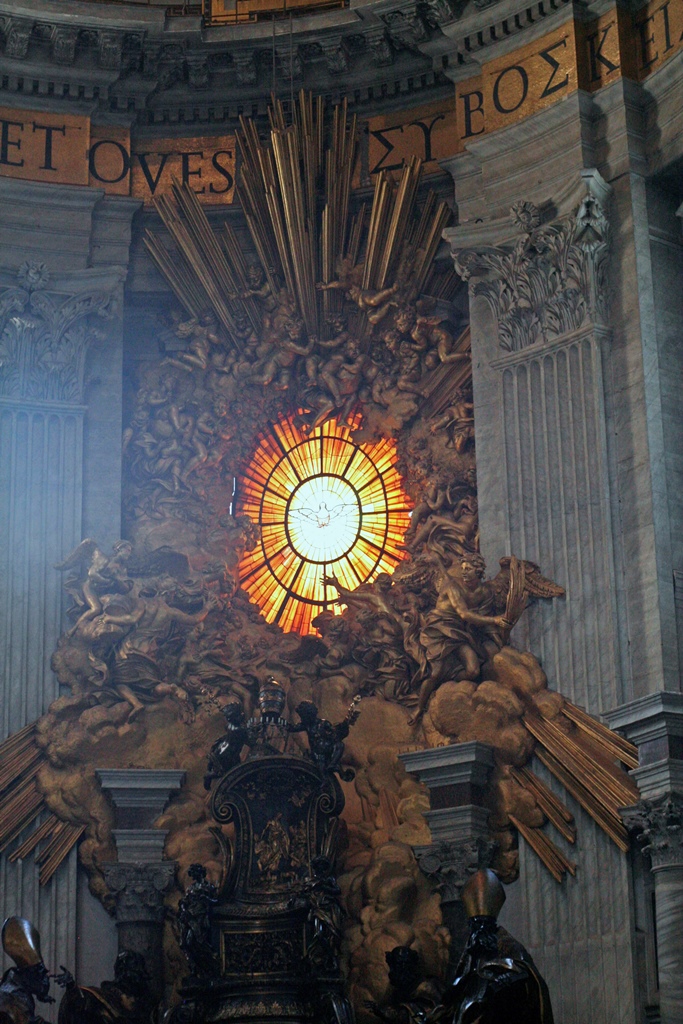
Throne of St. Peter, Bernini (1666)

Throne of Peter with Window and Decorations

Baldacchino, Apse and Monument to Alexander VII
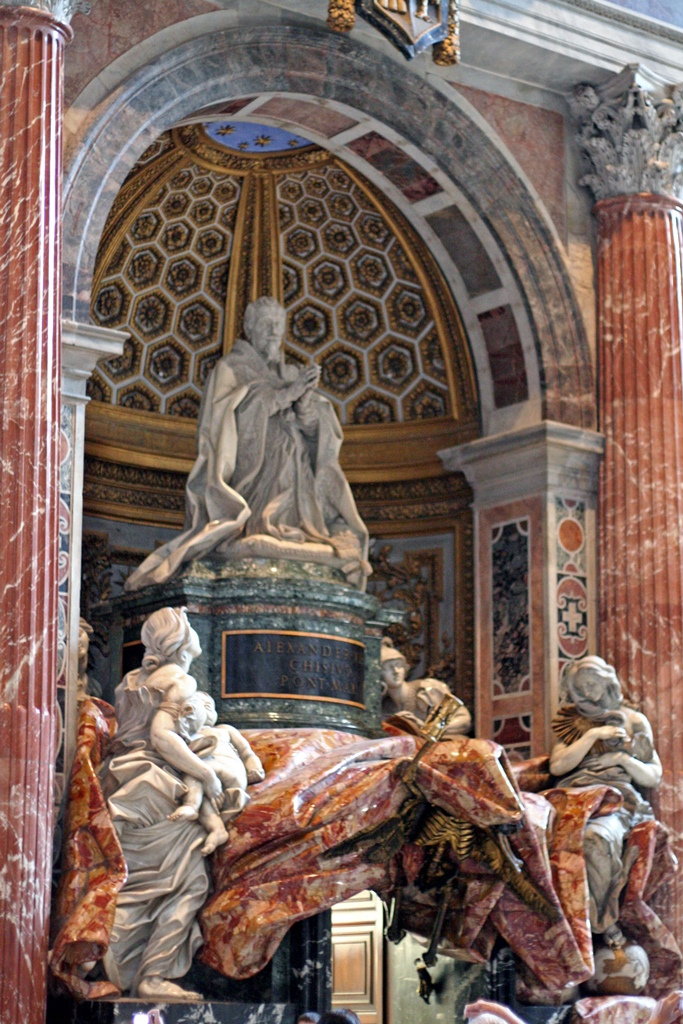
Monument to Alexander VII, Bernini (1678)
Outside the Basilica and to the right of the façade is an entryway to the grottoes beneath
the Basilica. Many Popes are entombed here, including the John Pauls I and II.
Tomb of John Paul I
Also to the right of the façade is the entry to the dome. This captured the imagination of Connie
and me. Nella and Philip elected to stay earthbound. It is possible to pay a fee and ride an
elevator to the roof of the Basilica, from which one needs to climb stairs to get to the top of
the dome. Or if one is cheap and in reasonable condition (like Connie and me, at the time), it is
possible to avoid the line for the elevator and walk up a spiral ramp that corkscrews around the
elevator shaft. Once arriving on the roof, there is an entryway to a catwalk around the base of
the dome on the inside, so you can look down on the many visitors. But there is a grille, so you
can't drop stuff on them.
Up on the Roof

View from the Catwalk
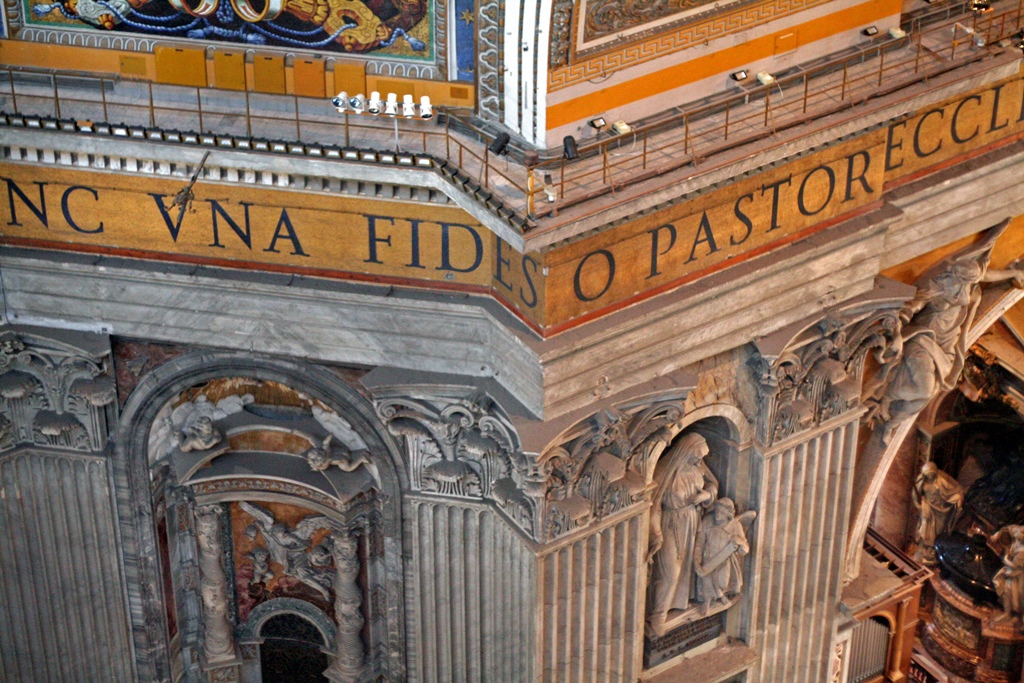
View from the Catwalk

Congregation from Catwalk
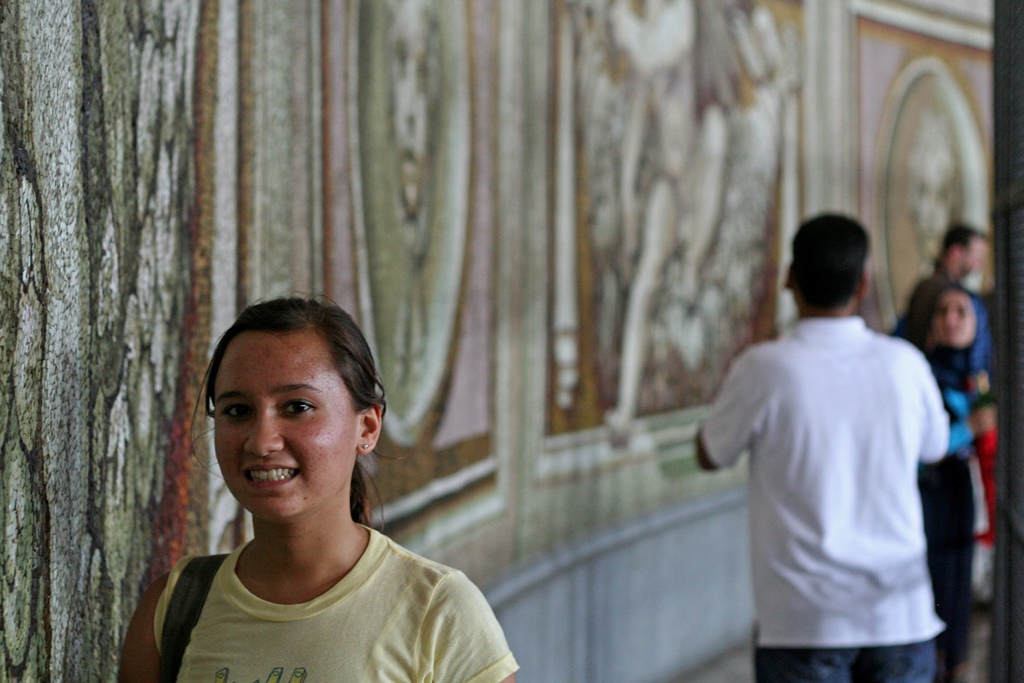
Connie on Catwalk
Back out on the roof, there is an entry to a stairway that goes up between the inner and
outer shells of the dome and eventually emerges at the base of the lantern atop the dome.
This isn't a very big area, and it can be very crowded. But this is the highest point in
Rome, and the view is unparalleled.

St. Peter's Square and Rome
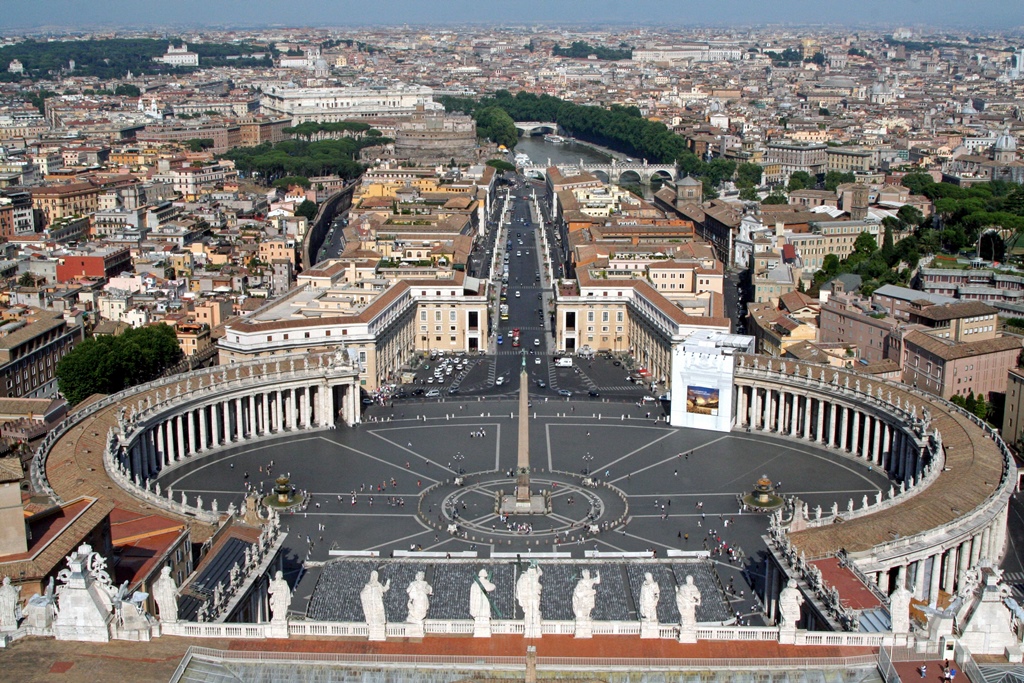
St. Peter's Square
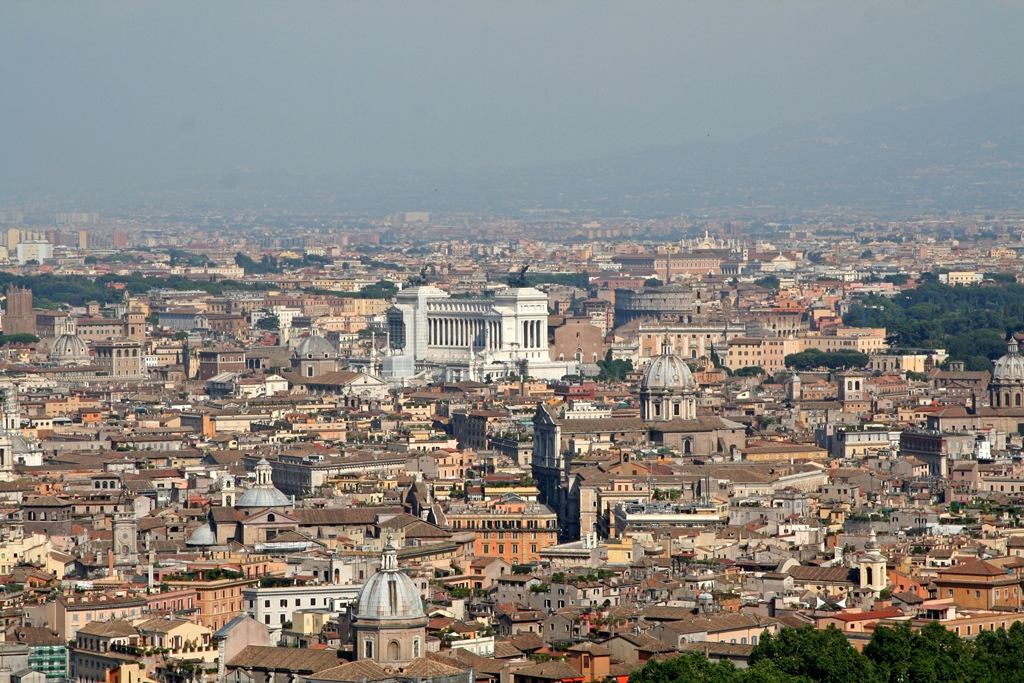
Victor Emmanuel Monument, Colosseum & Churches
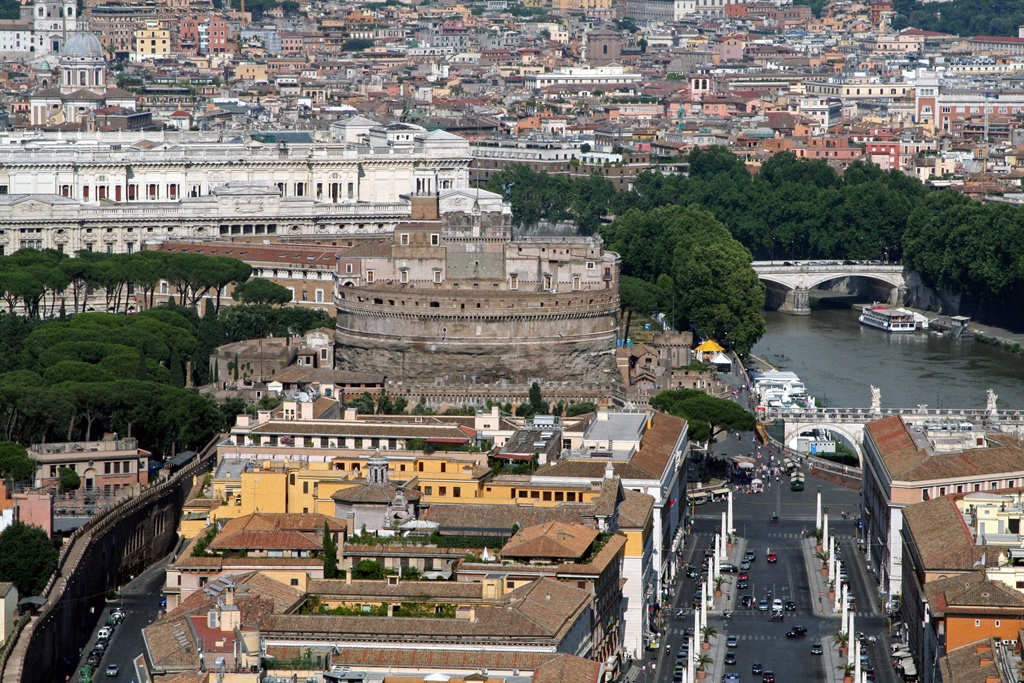
Castel Sant'Angelo and Tiber River

Vatican Museums and Sistine Chapel
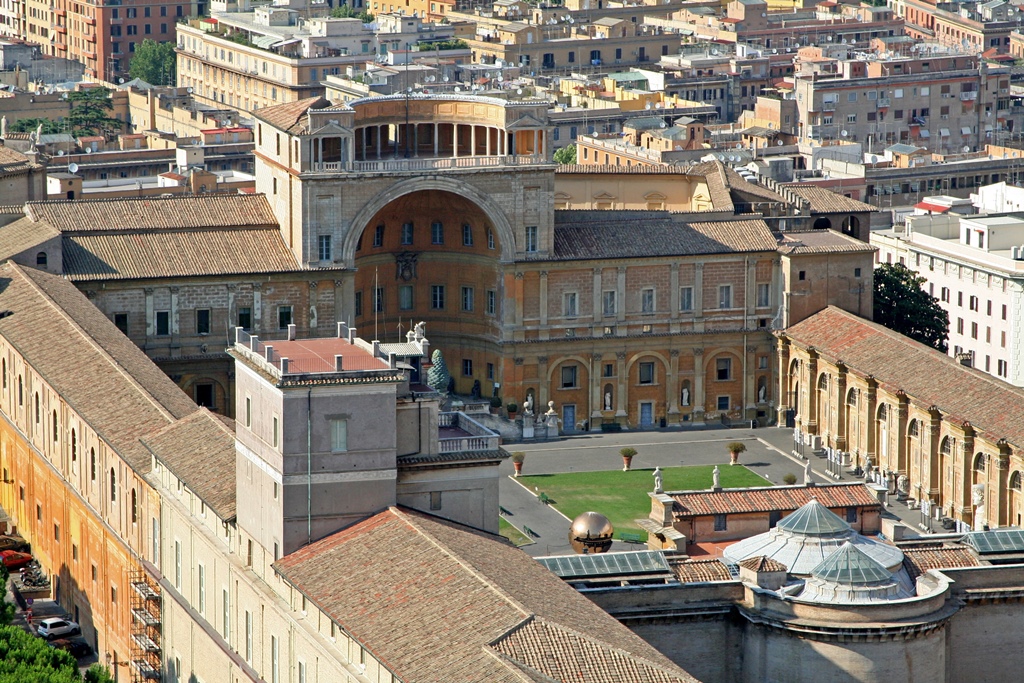
The Vatican Museums

Vatican Gardens
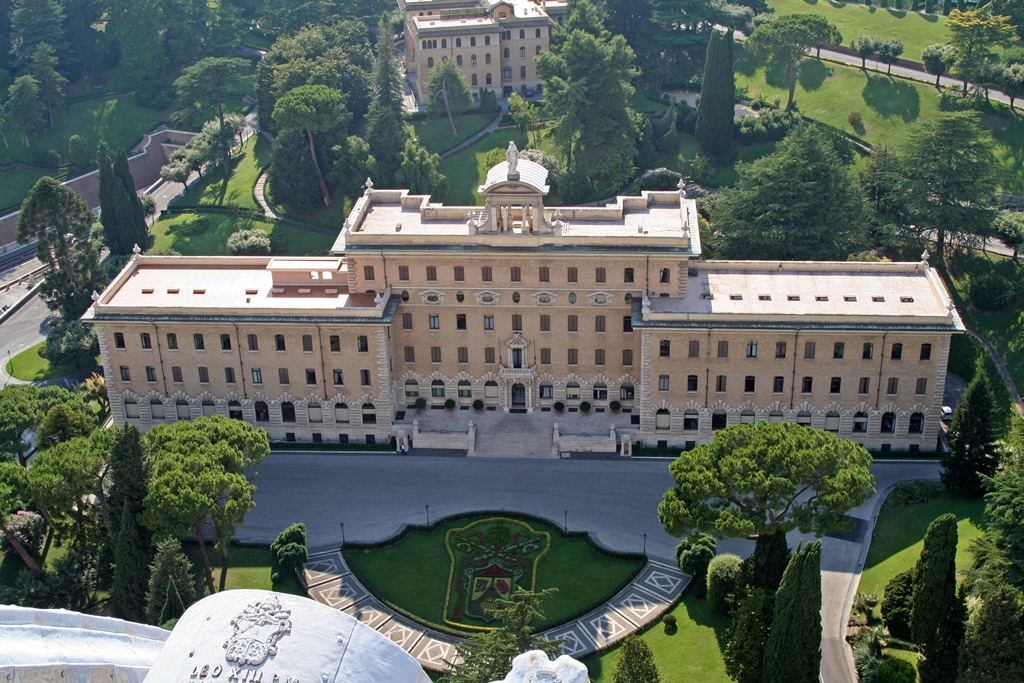
Vatican Government Palace
Connie on Dome
When going back down, there is an exit to a different part of the roof, where there is
access to a gift shop and to a point near the façade where you can get a good view of the
backs of the 19-foot-tall statues that line the top. From here it is much easier to get
down than it was to get up.
Descending Dome Passageway
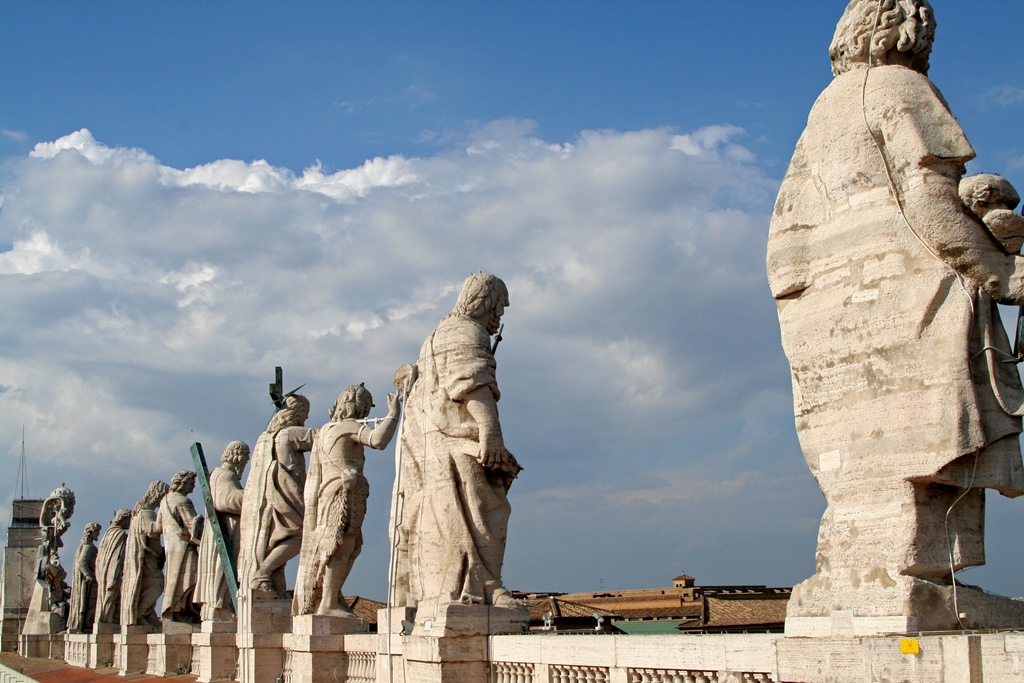
Backs of Façade Statues
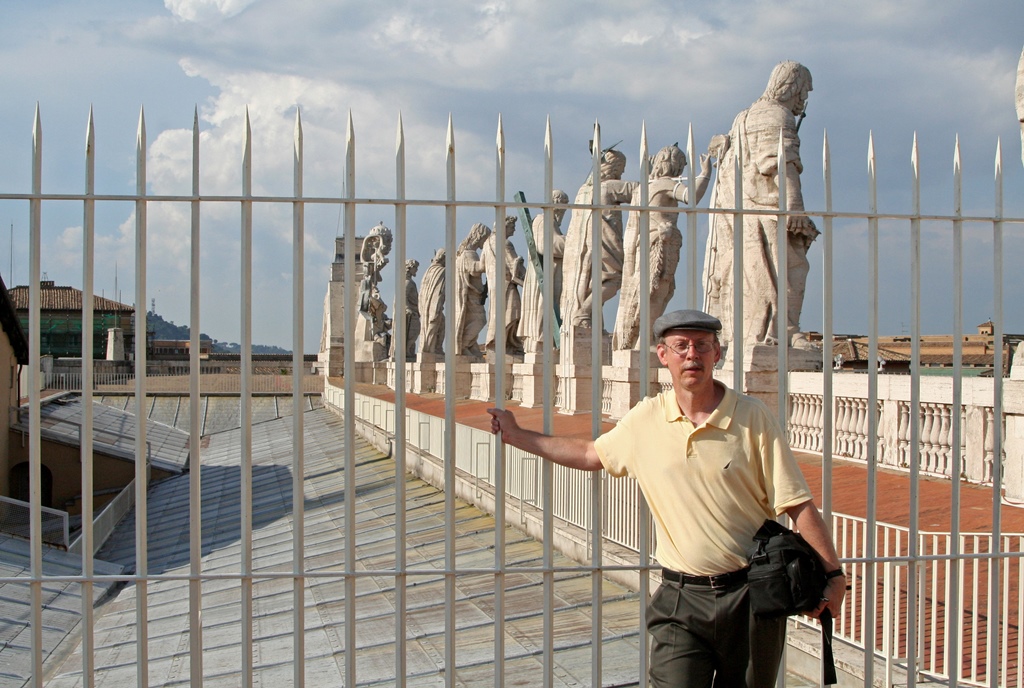
Bob on Roof

Façade Statues and Roof
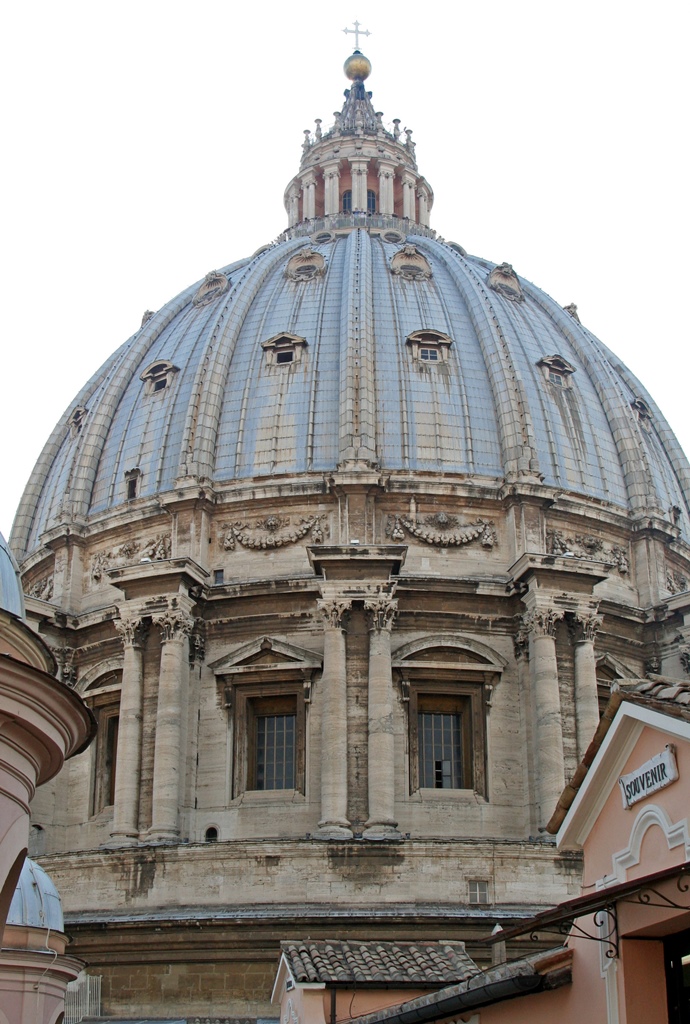
The Dome
After reuniting, we agreed we'd seen enough of the Basilica, so we exited the square to the
south and found a bus stop, where we waited for a bus that would take us back to the vicinity
of the Piazza Navona.
Canonical Palace and Sacristy, Near Exit
We returned to the apartment and began making ready for the long trip back to the U.S.A. But
little did we know how long the journey would turn out to be….

